The Cairngorm Club traditionally do an annual traverse (in September) from Linn O’Dee to Cairn Gorm (or vice versa) and I’d always wanted to do this in winter conditions: a small group assembled, we headed out on Friday eve from Keiloch for an overnight in the howff to get started early next day, however the forecast for Sunday was dire, and I had misgivings that the parties pace would be sufficient to get to Aviemore in time to allow homeward transport Sunday night.
I kept my headtorch off for most of the night walk, the full moon illuminating the track and sparkling off the burn; for the fords and then higher up I began to encounter snow and ice, and switched it on briefly.


At the howff we discussed options: as I was working Monday morning and had to be back, I thought we could head out towards the traverse route past Beinn a Bhuird, and if a target time hadn’t been met then I’d turn back and leave them to it. The 3 of us settled down (could at a squeeze fit 4 perhaps 5 in here lying down). I should have paid a bit more attention to some damp spots on the howff floor: condensation was running along the corrugated roof, then dripping off protrusions: one of these led to a damp spot on my sleeping bag discovered in the morning; I could have slung my goretex over the bag.
The morning saw cracking conditions and we headed off north of the howff (this would prove later to land us with a surprise) as the sun began to climb
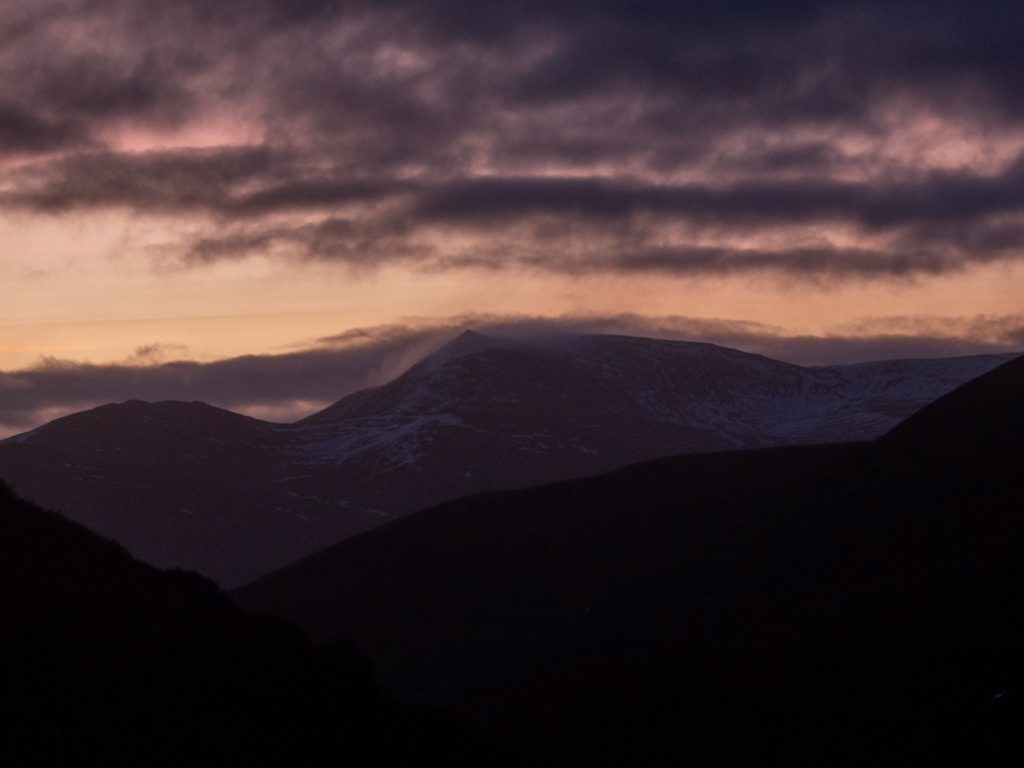
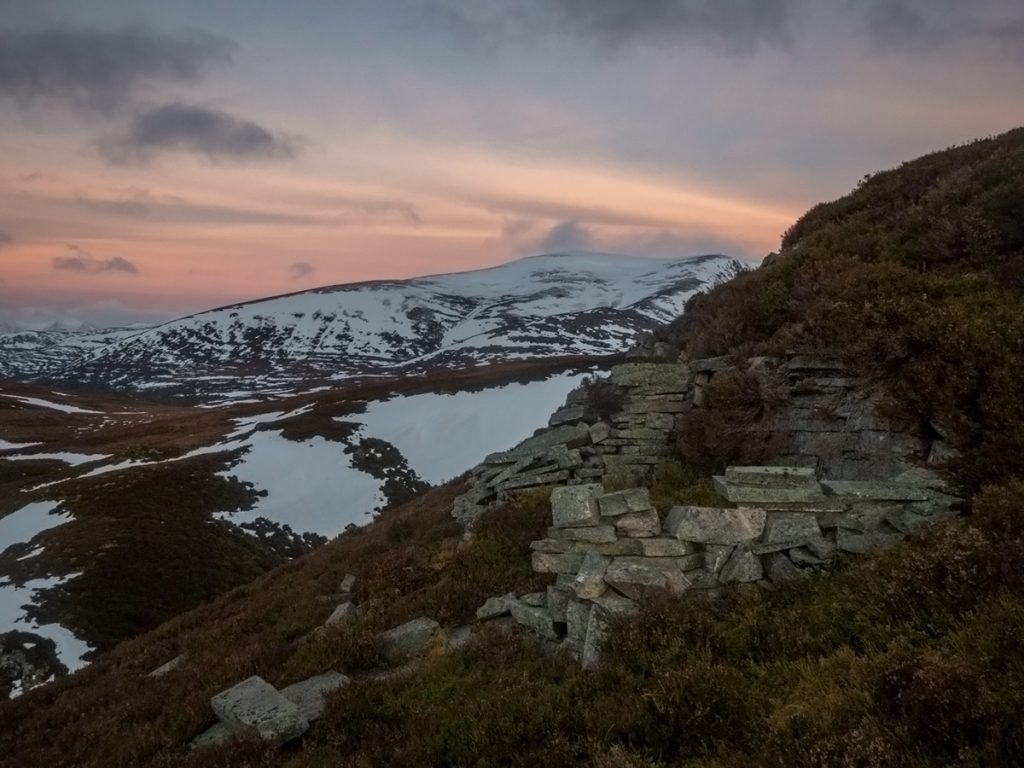
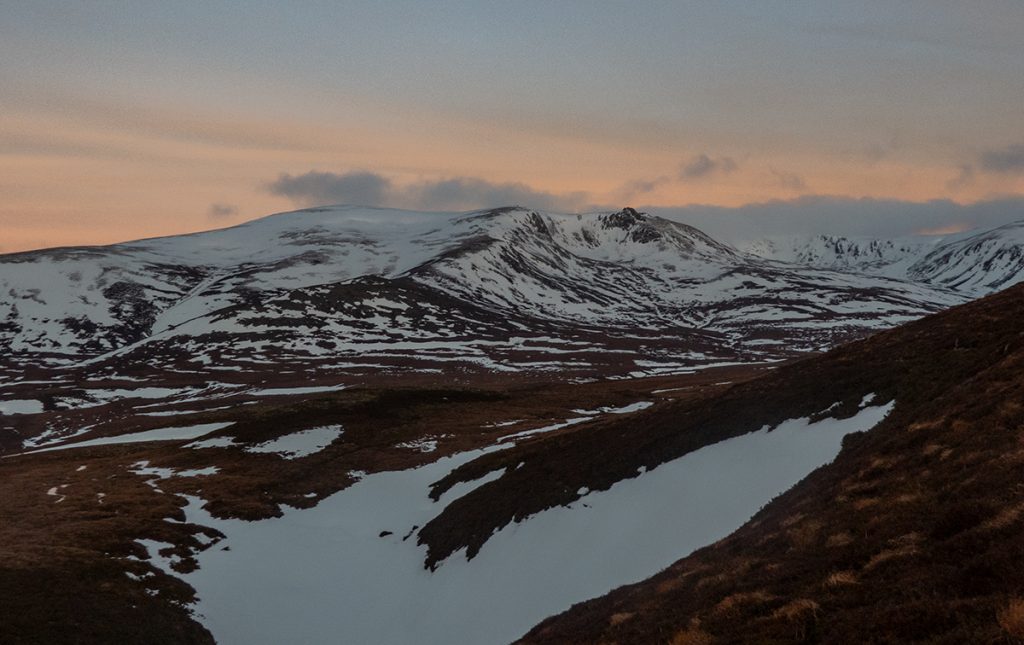
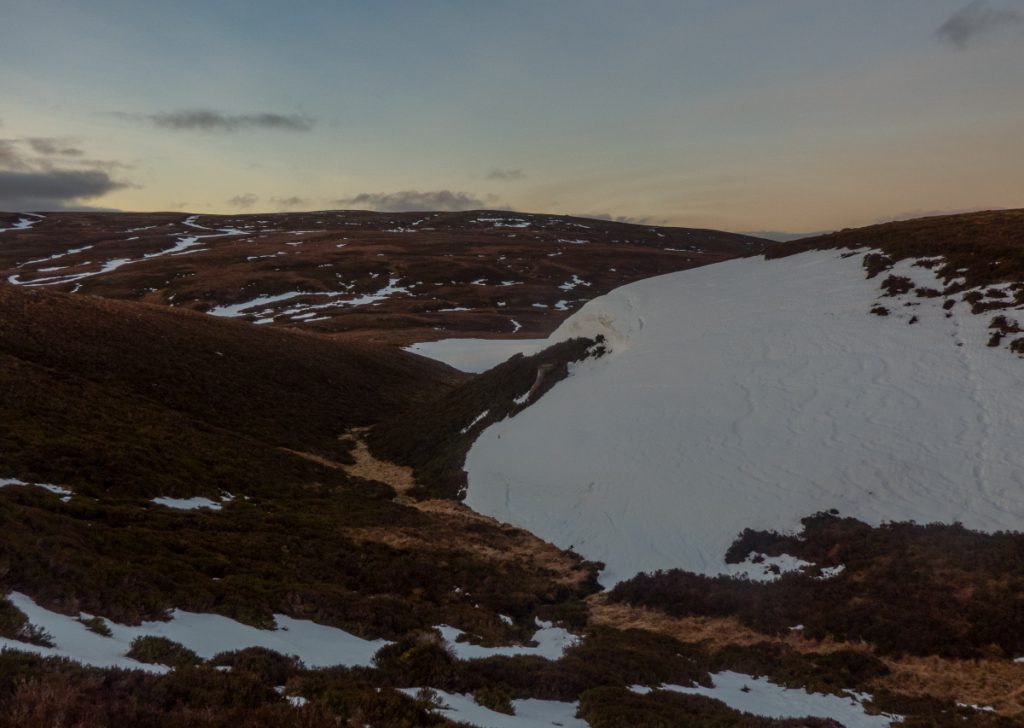
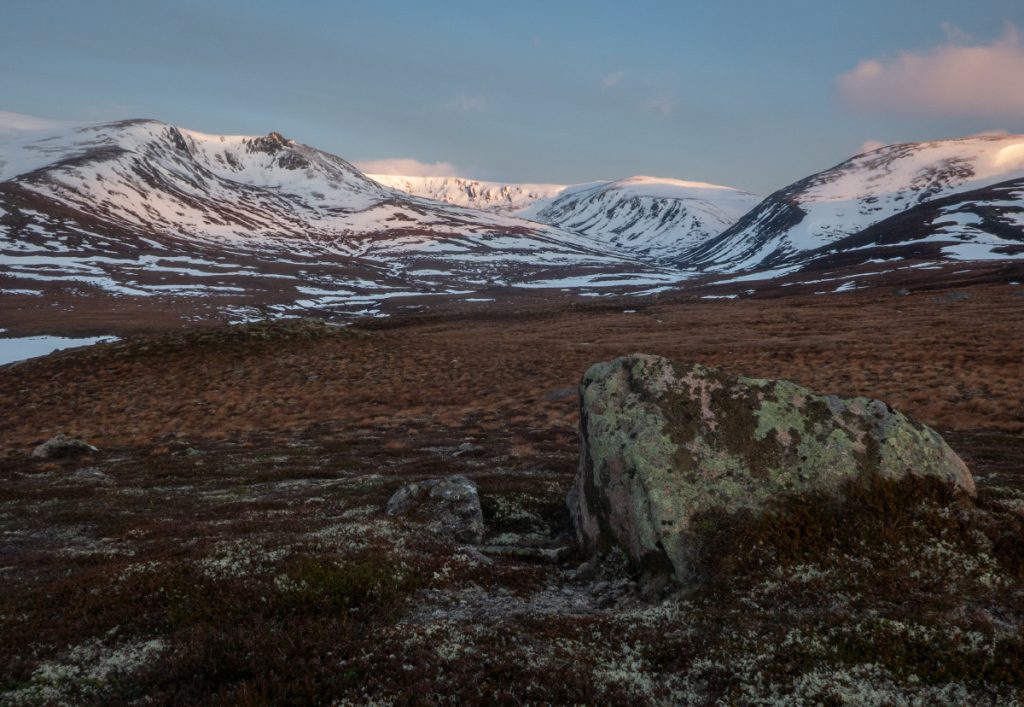
We attempted crossing upstream of the main ford location; I’d taken water shoes ( a thin sole and some netting fabric) foreseeing multiple potential crossings and was glad to not risk wet boots early on, although the water was bitterly cold.
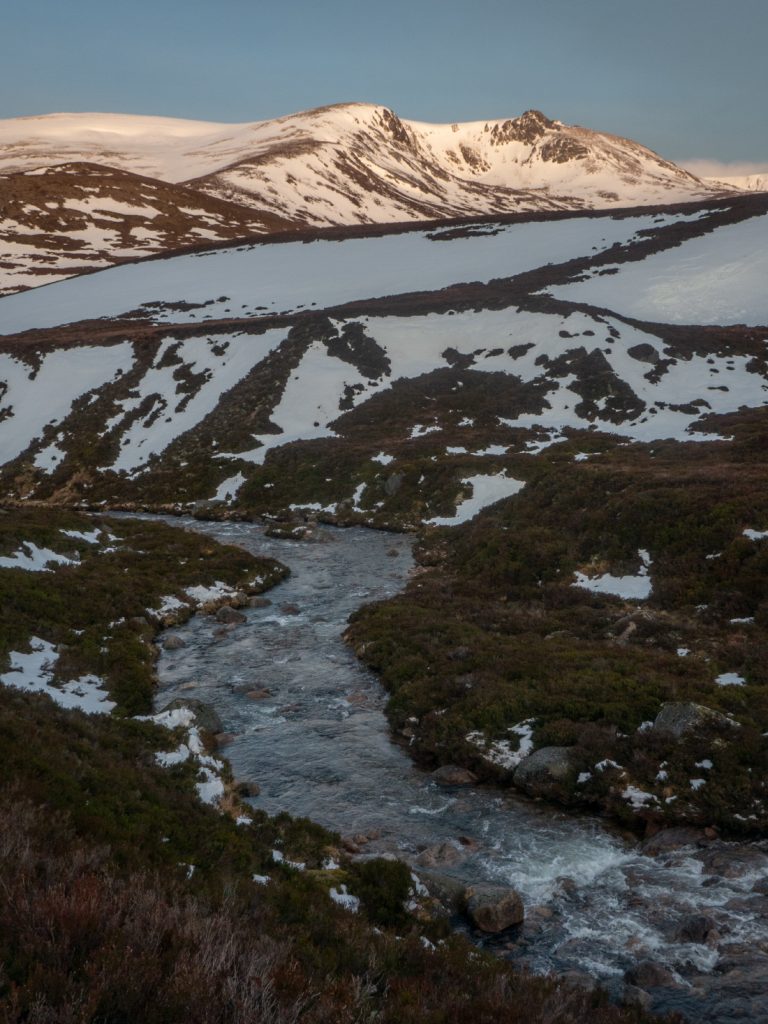

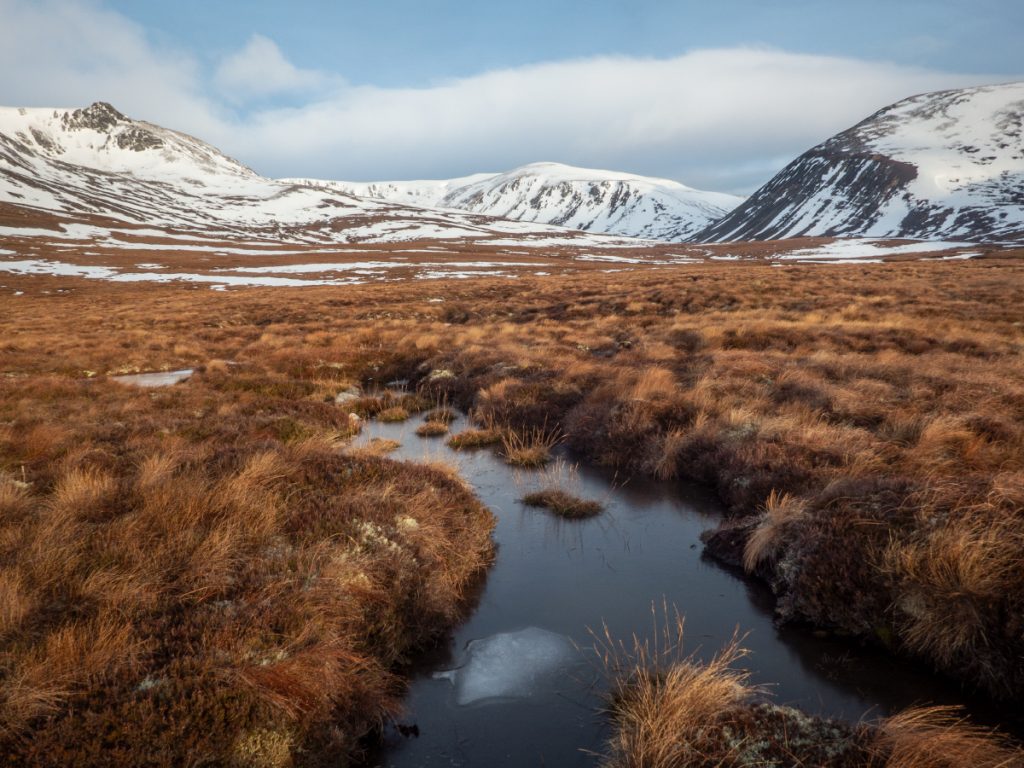
We could see snow-free terrain on the east side of Carn Fiaclach so headed there rather than follow the path which we though would be banked out with snow. The east side has some interesting diagonal peri-glacial ‘terraces’, they don’t quite point in the direction of travel but useful to zig-zag
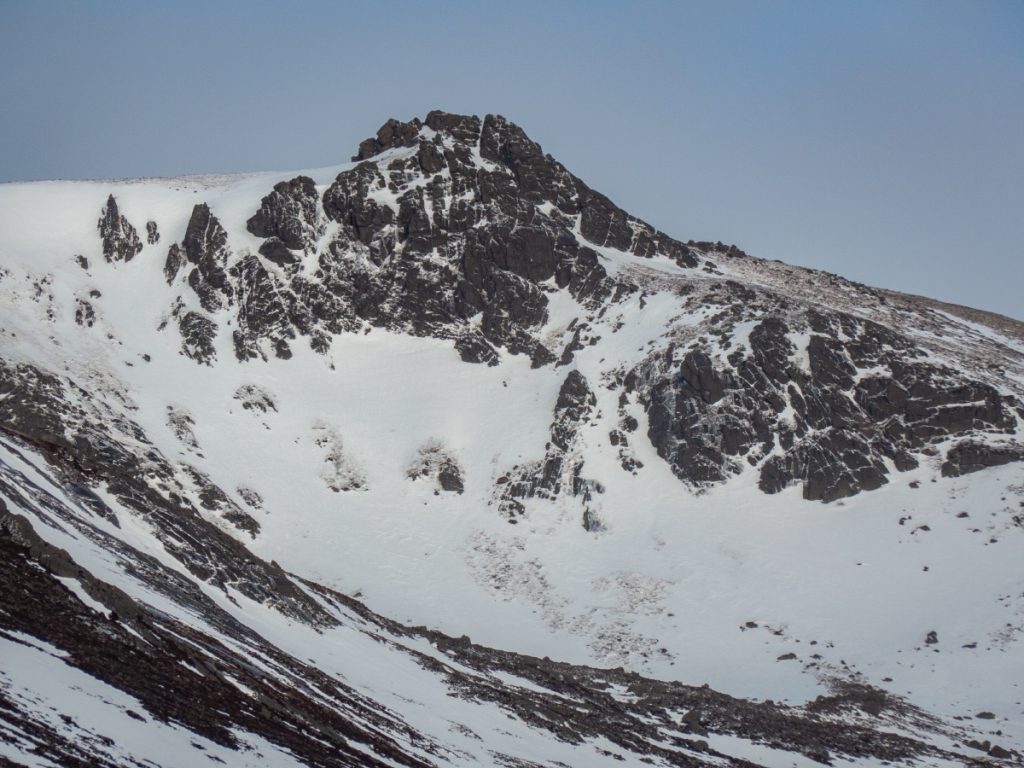
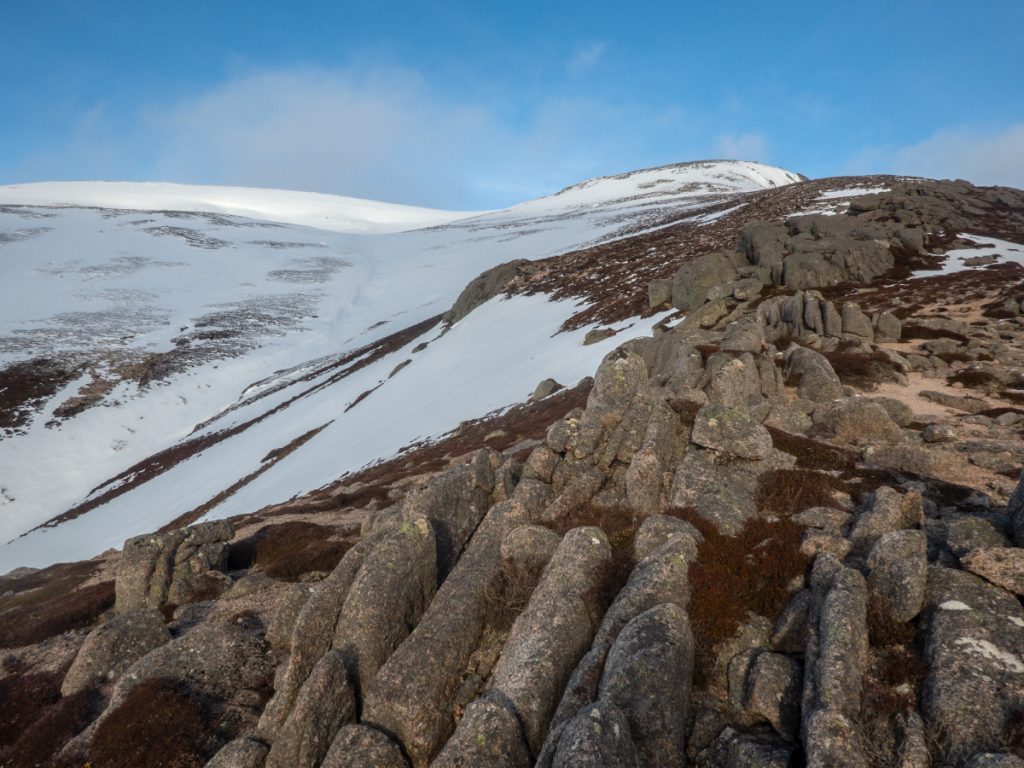
The first major snowfield was rock-hard neve and the crampons had to go on and the axe out, with a bouldery run-out hazard

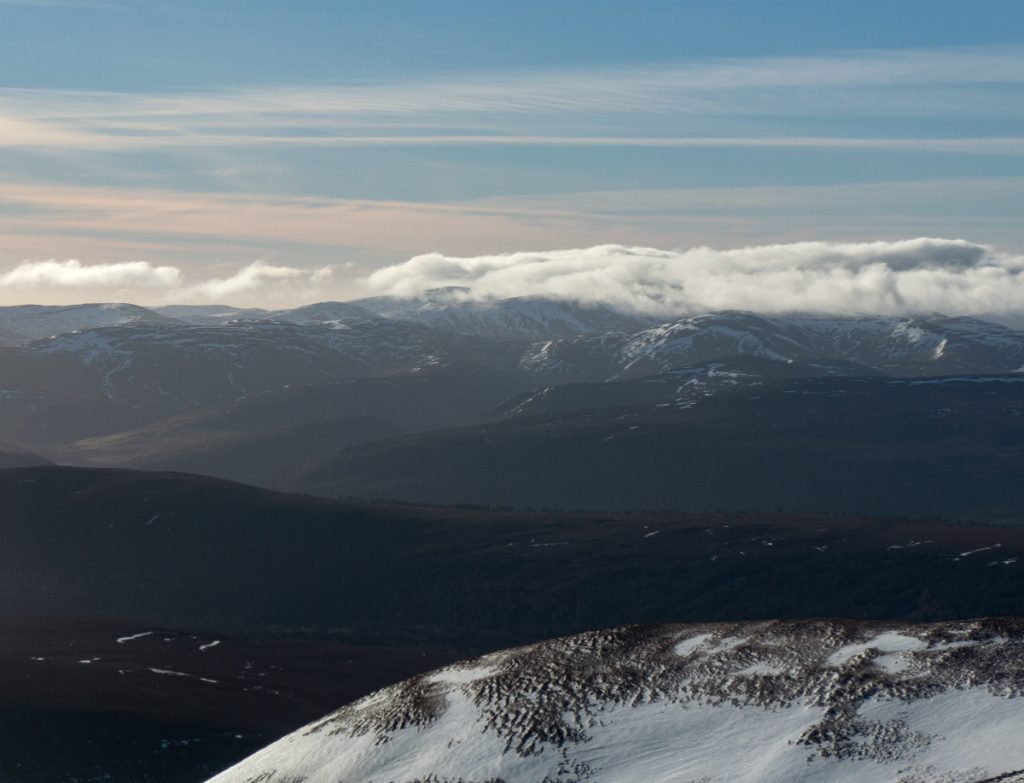
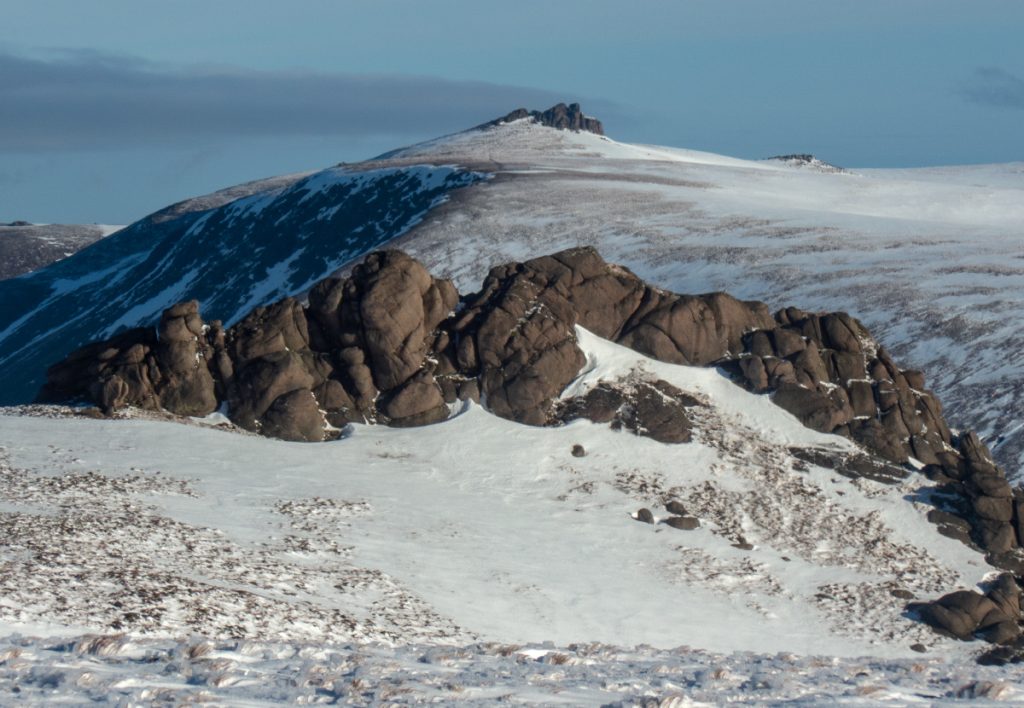
We’d not made good enough time on the ascent and between us had agreed to not do the traverse, but take in Ben Avon and loop back to the start. We headed around the corrie of Beinn a Bhuird, keeping well back from the edge with massive cornicing.

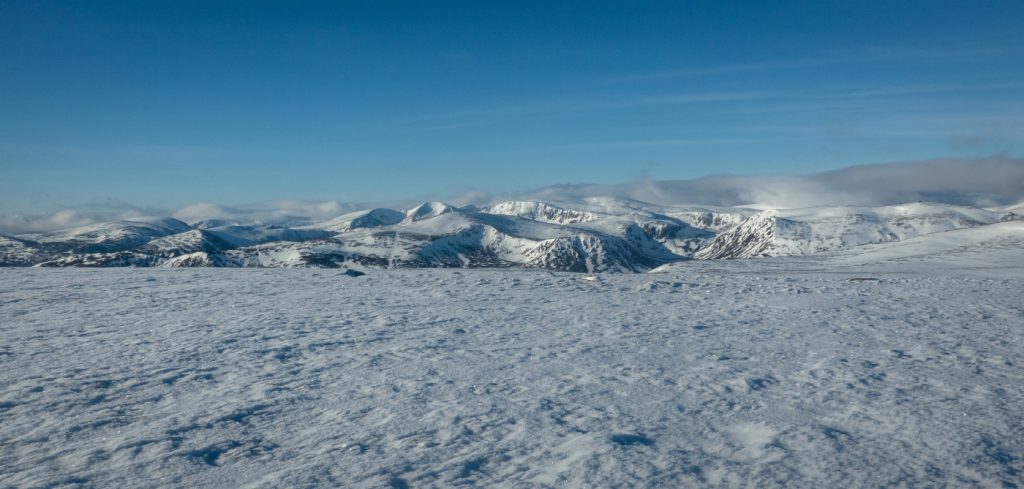
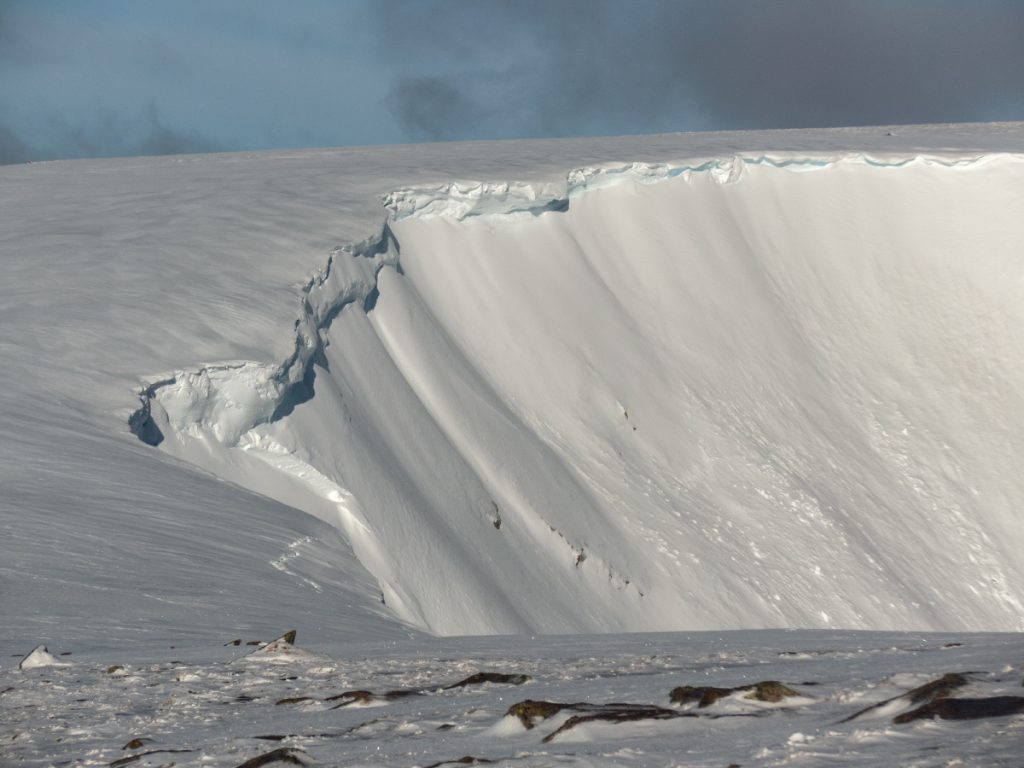
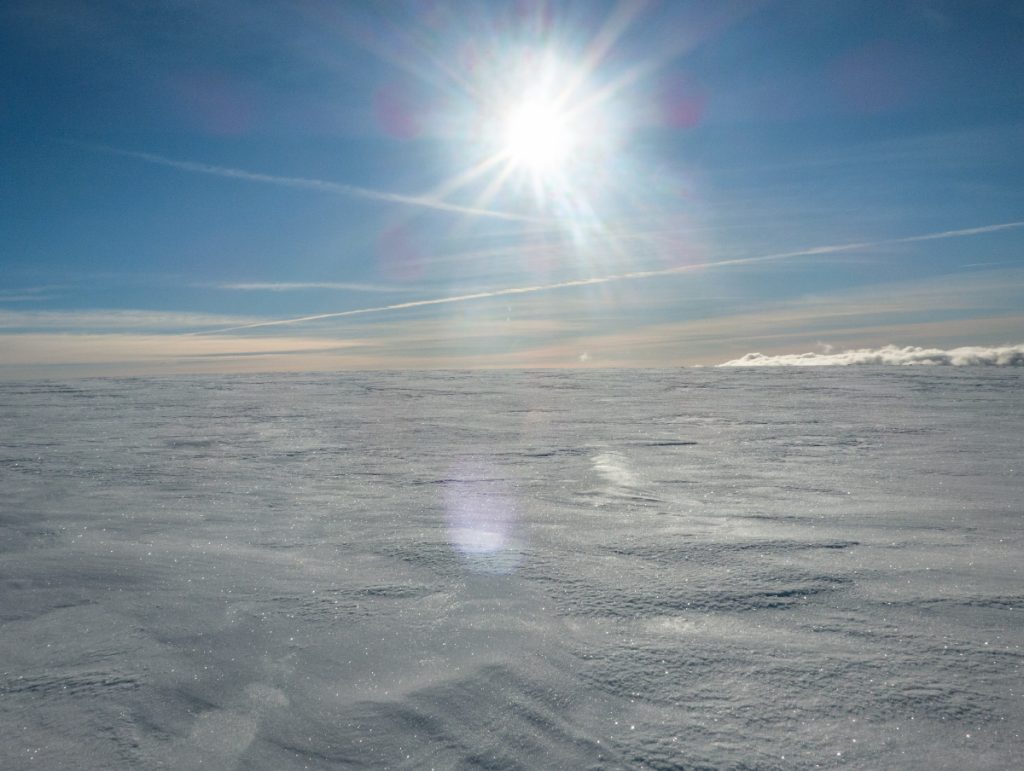
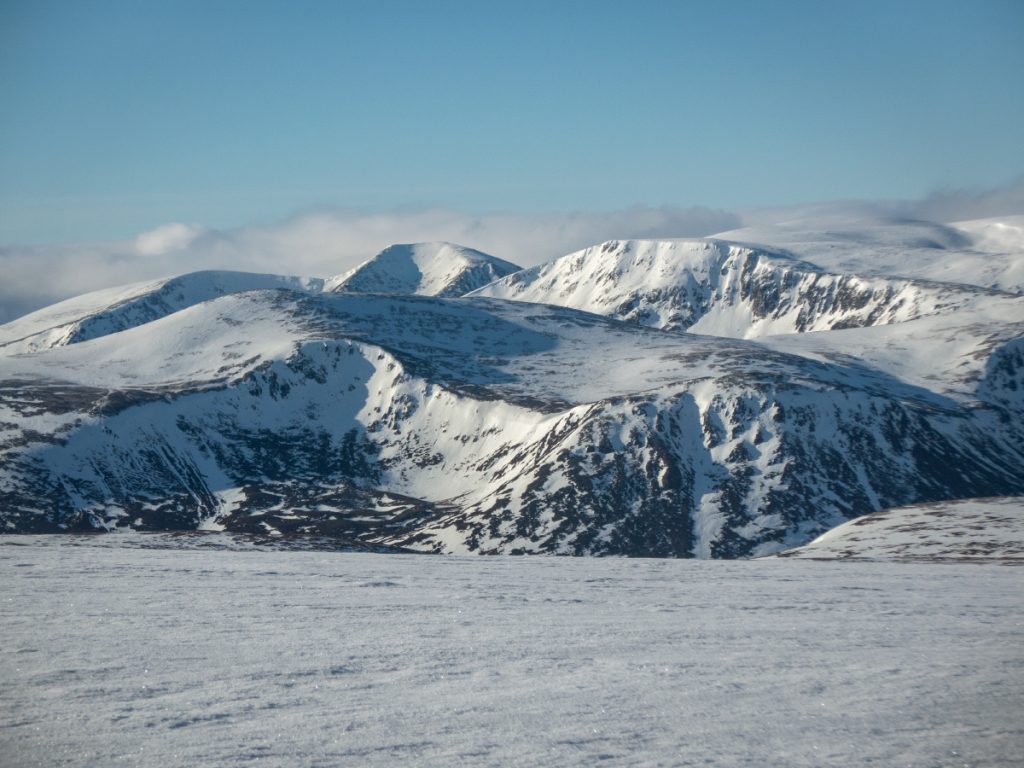
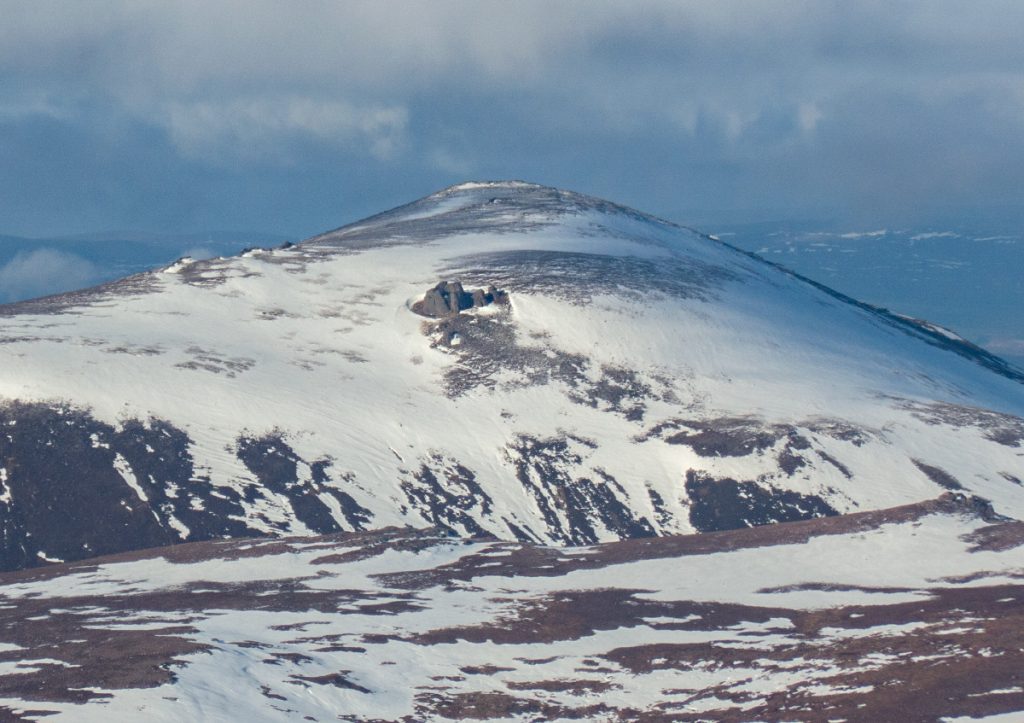
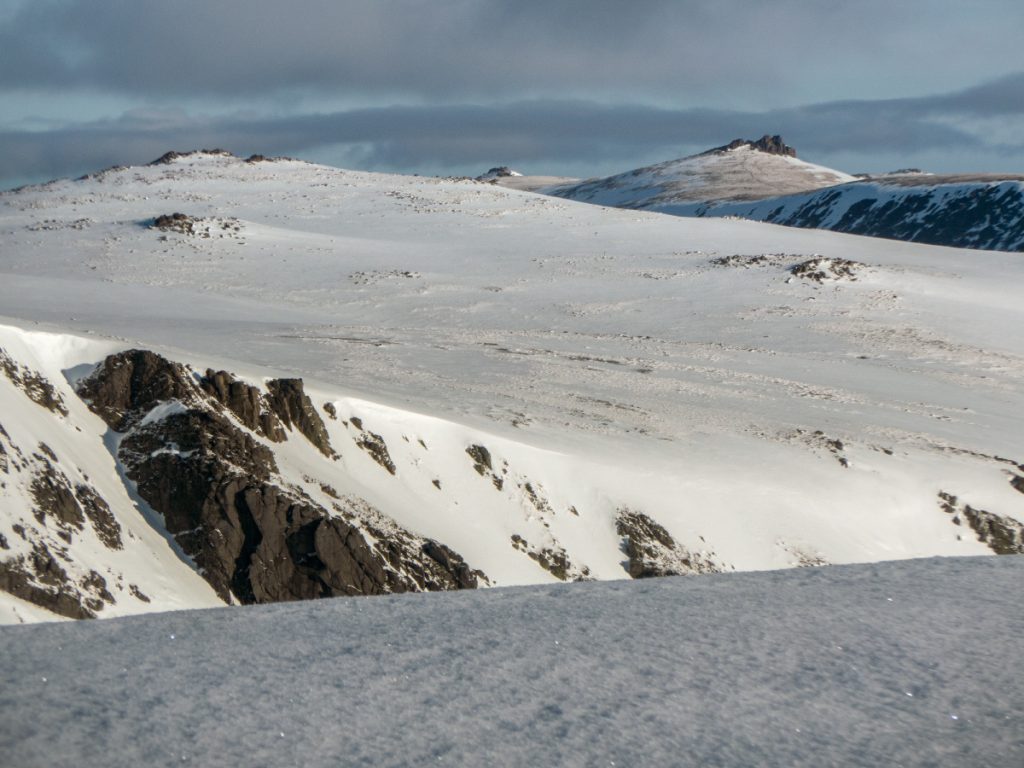
The north top isn’t very exciting, just a few boulders
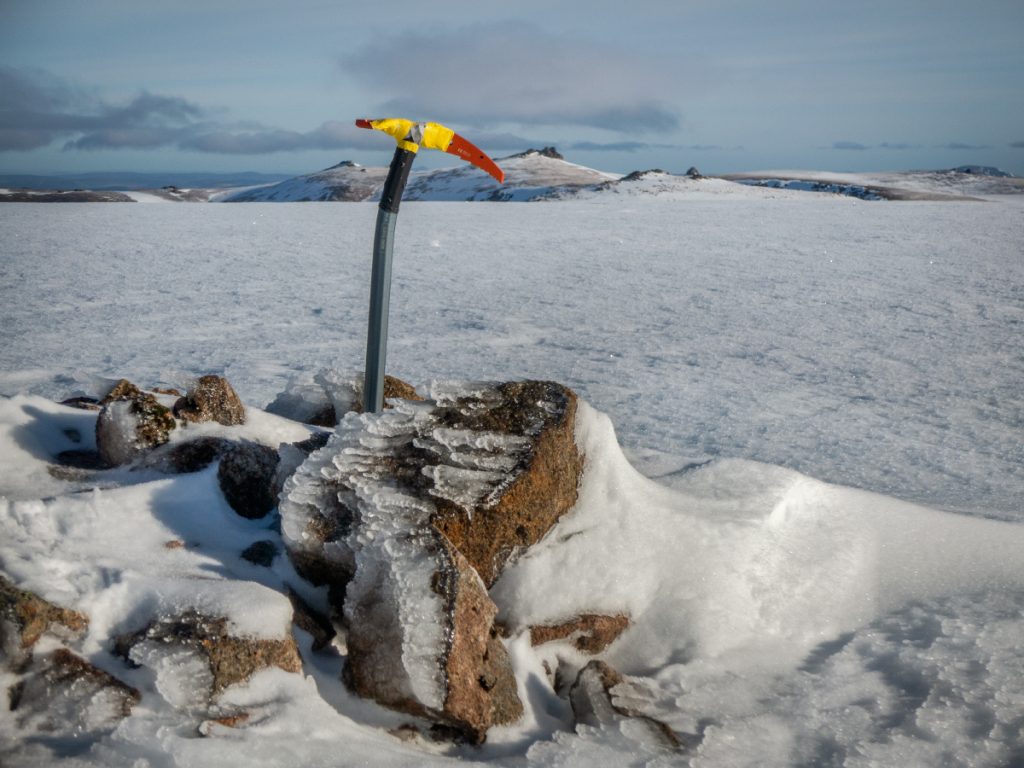
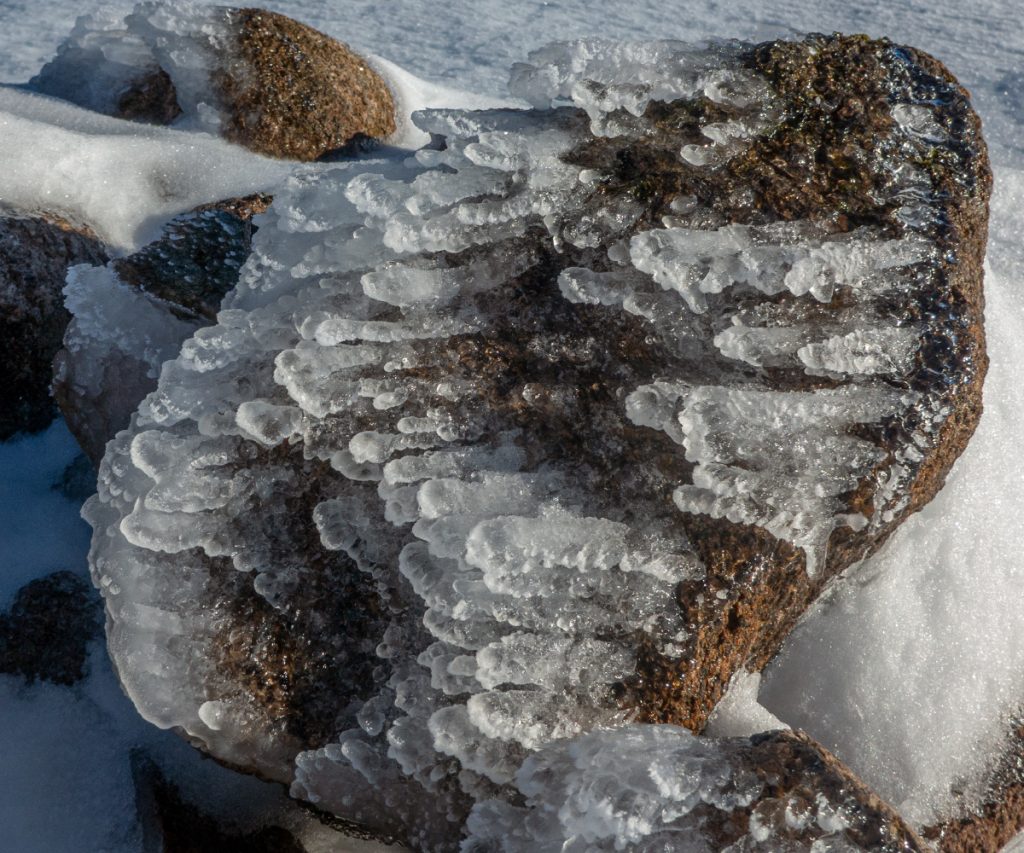


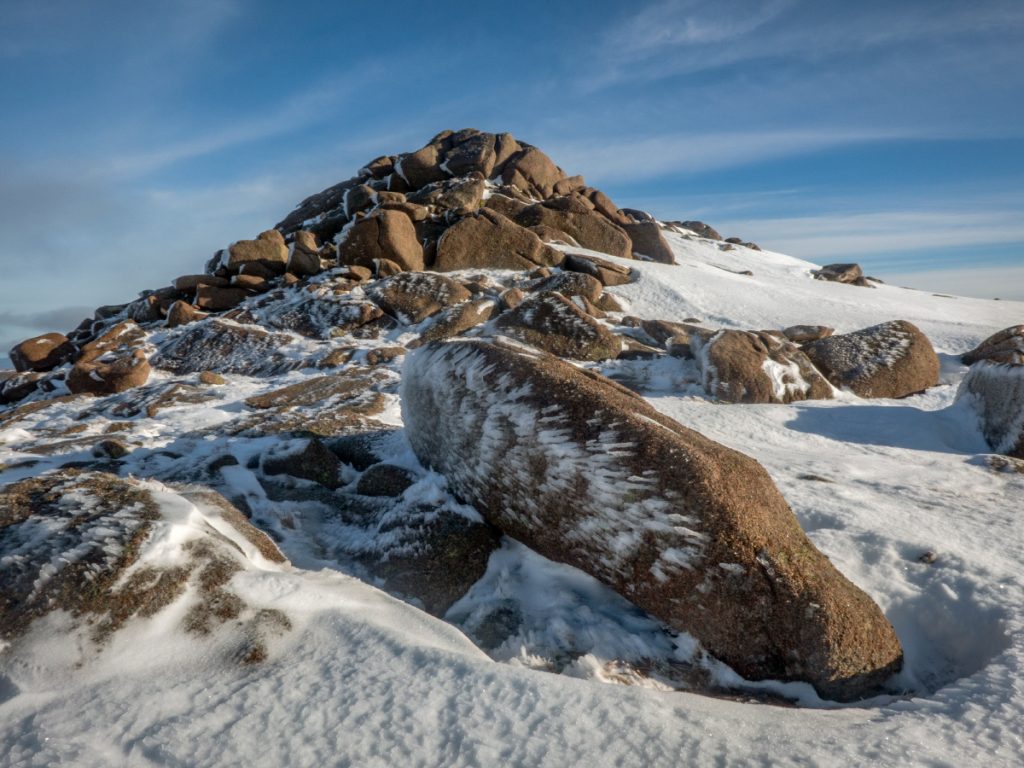
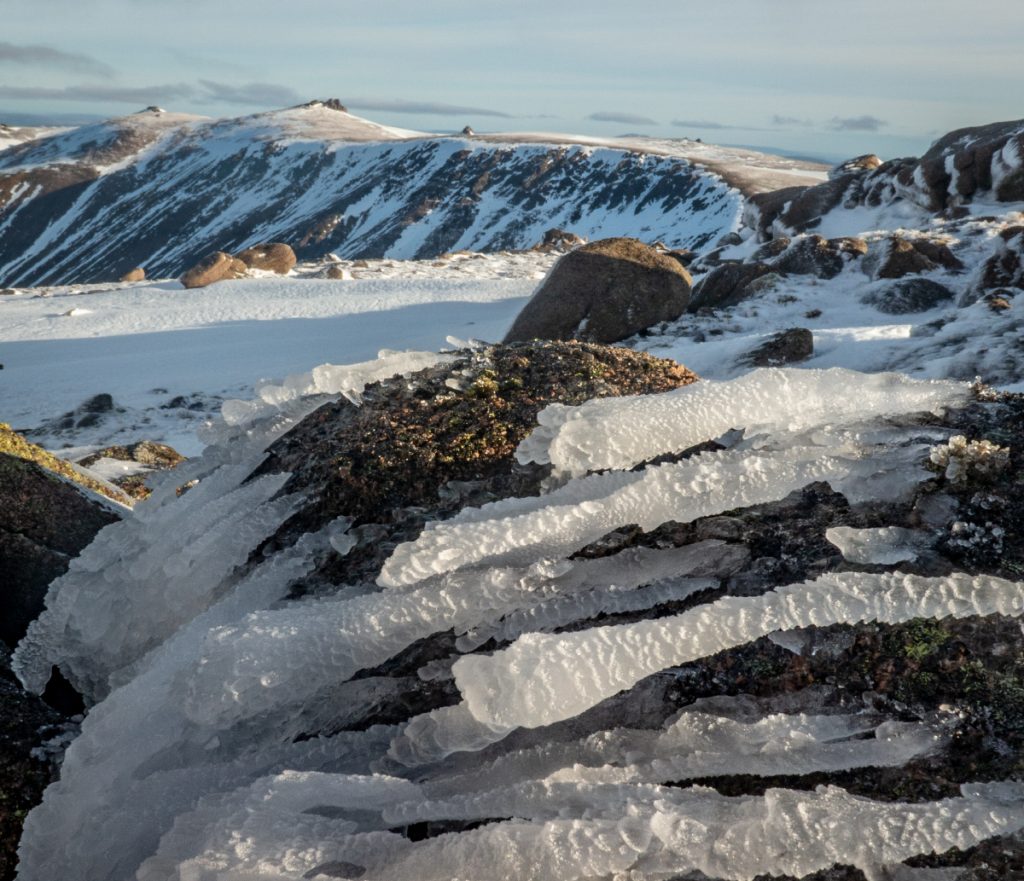
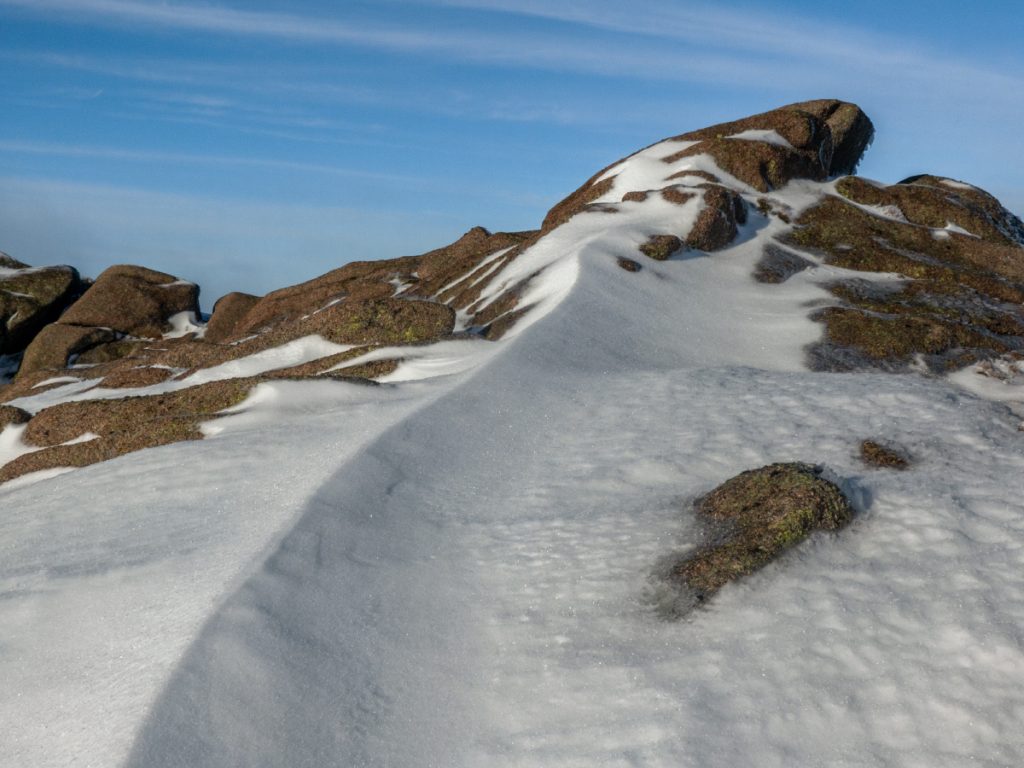
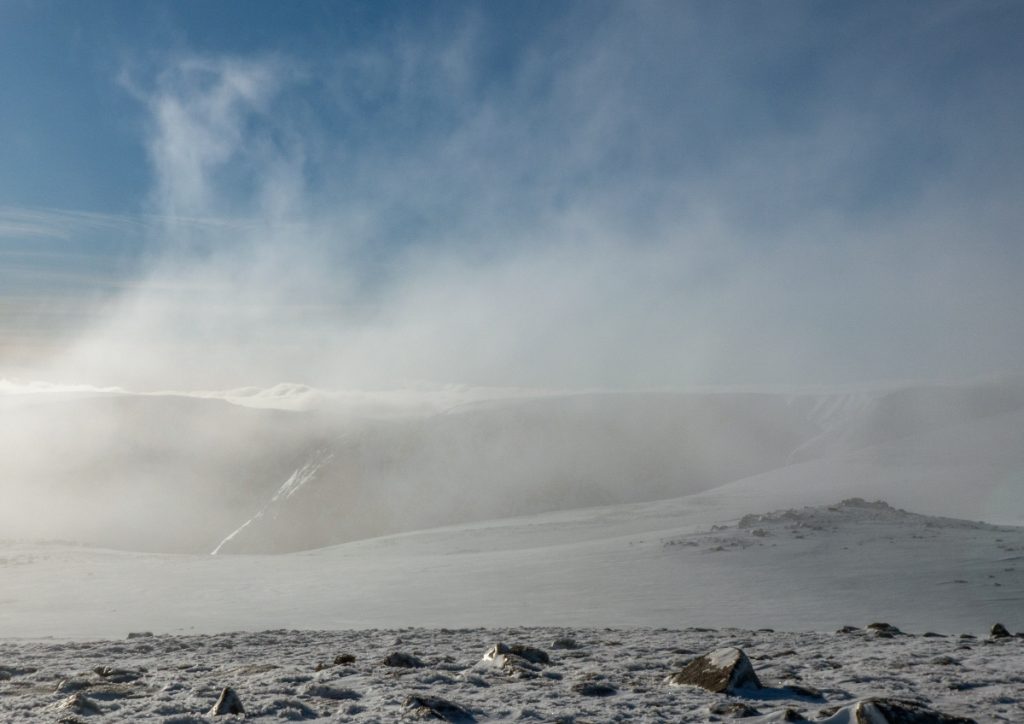
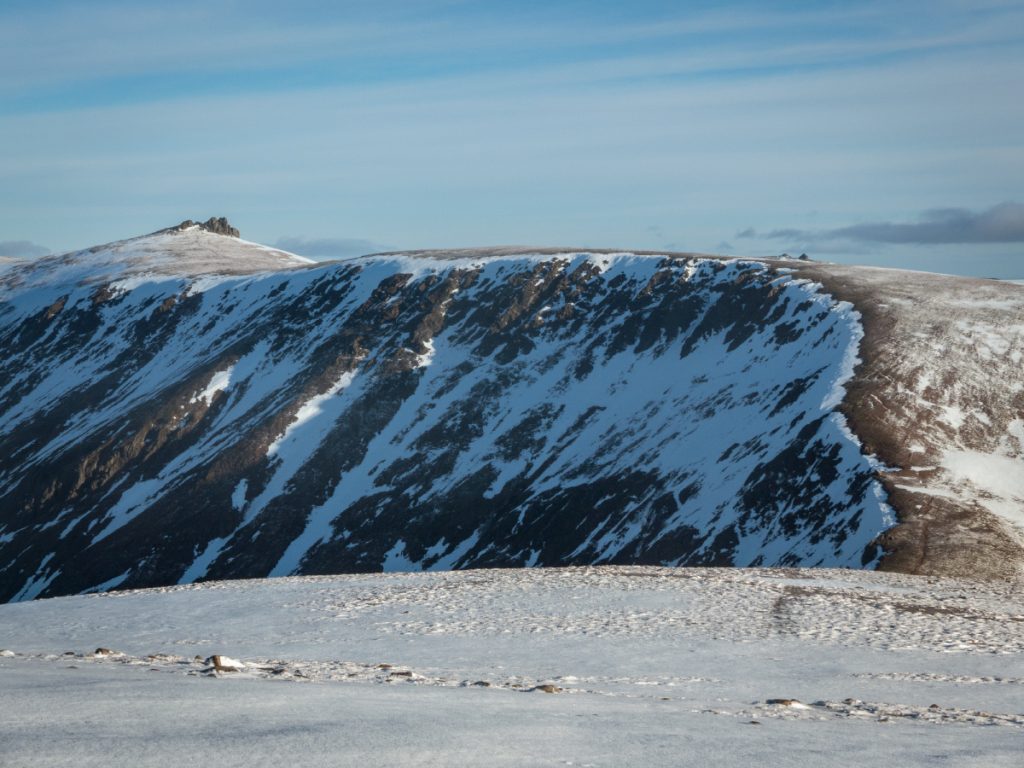
As we headed towards The Sneck, and with the previous bullet-hard neve in mind, I suggested we avoid the short but steep descent and deviate south east to a less steep humped ridge, but the others were keen to go down here.
Within a few paces heading down, it was clear this was dodgy as hell, and I turned inwards to face the slope and started front-pointing down. The neve was sufficiently hard that I regretted my lightweight axe and strap-on alu-alloy crampons (I’d taken lightweight kit for comfort and less load, as there’d been no intention of getting ‘technical’). The lightweight metal occasionally skittered off the hard-ice, and after a while I had to take short breaks as my legs and arm were beginning to tire. Looking down, there was still a fair way to go and I had to traverse around various rock-slabs glistening with verglas ice, and continued to proceed carefully.
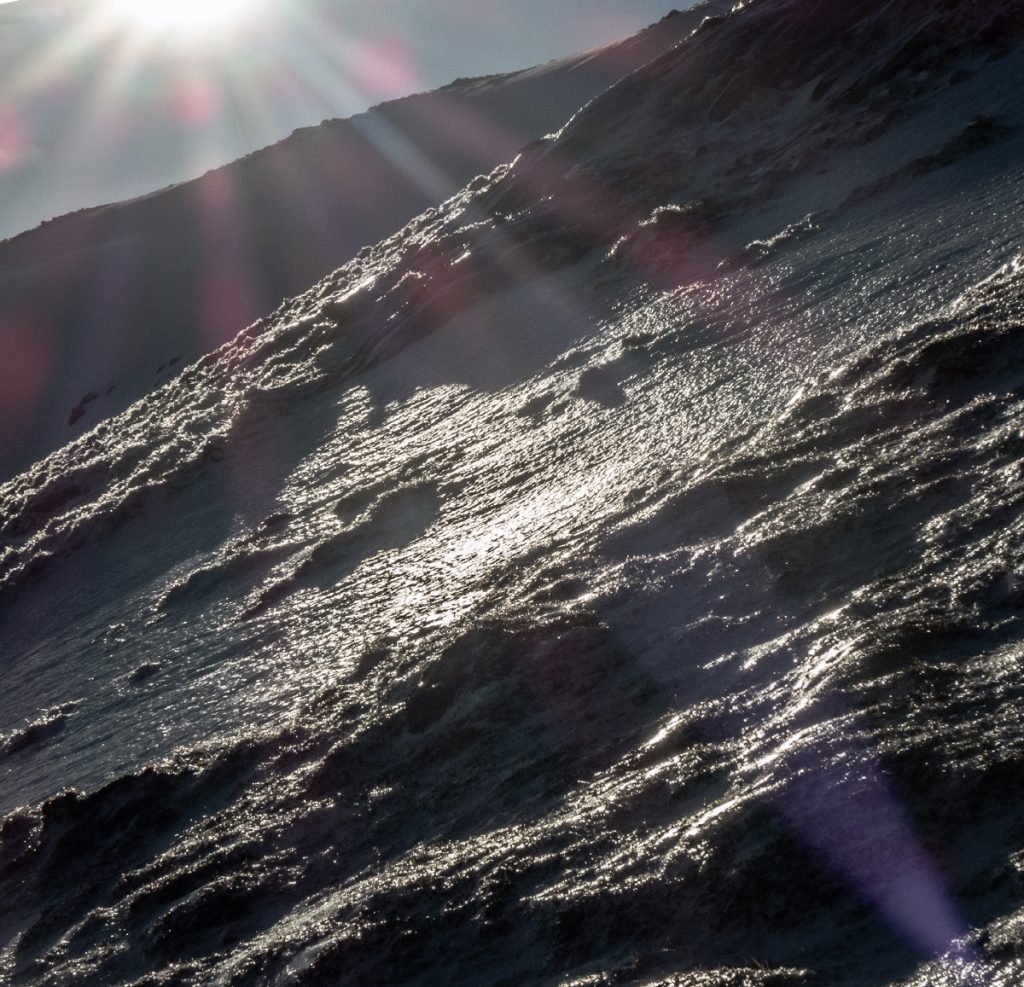
I’m pretty sure I’d have been much quicker taking the longer but walkable route down, and way safer. I sometimes get talked into stuff by folk who are looking for drama/excitement, and I should stick with my guns really. A bit of practice on the axe and some useful limitations found (equipment, but also my hand’s ice-axe grip endurance). This would have been a good scenario for a french-style ‘piolet ramasse‘ descent, but not something I’ve practiced and was going to deploy on consequential ground.
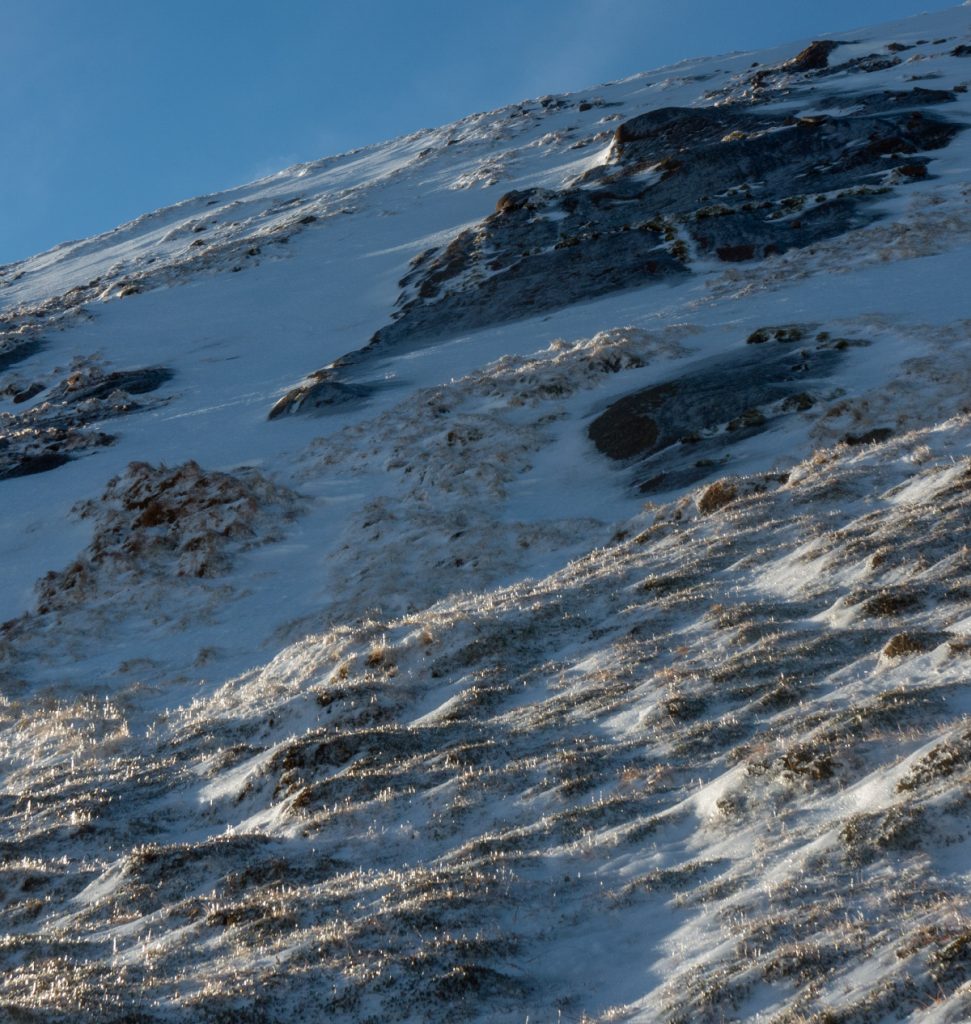
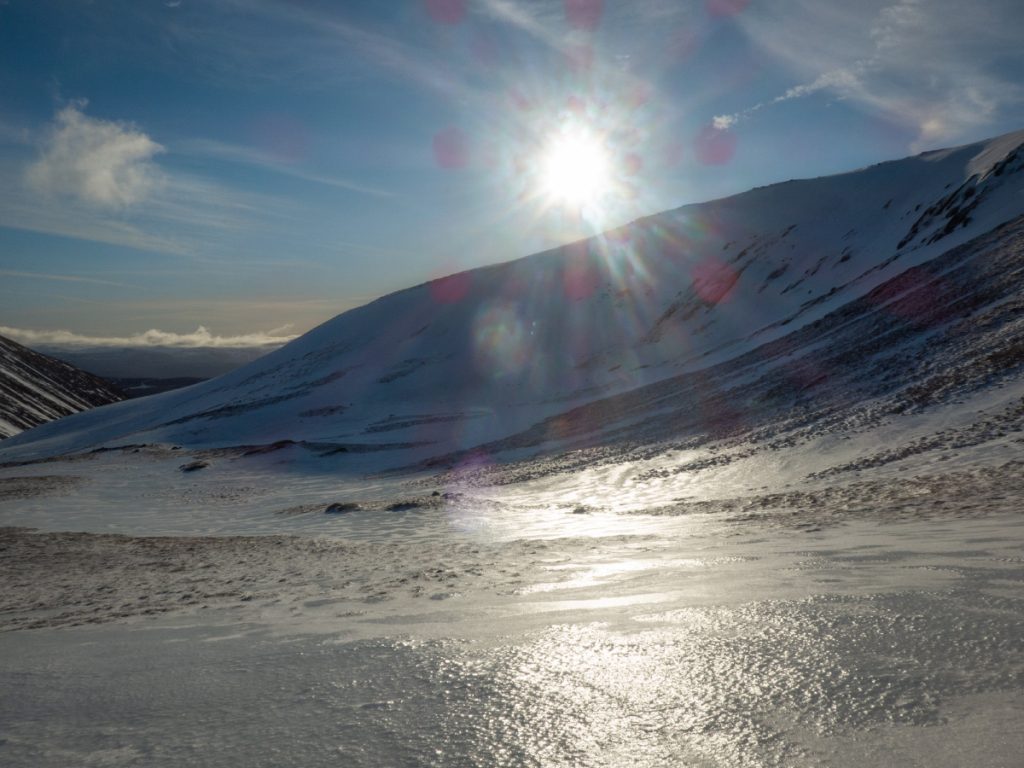
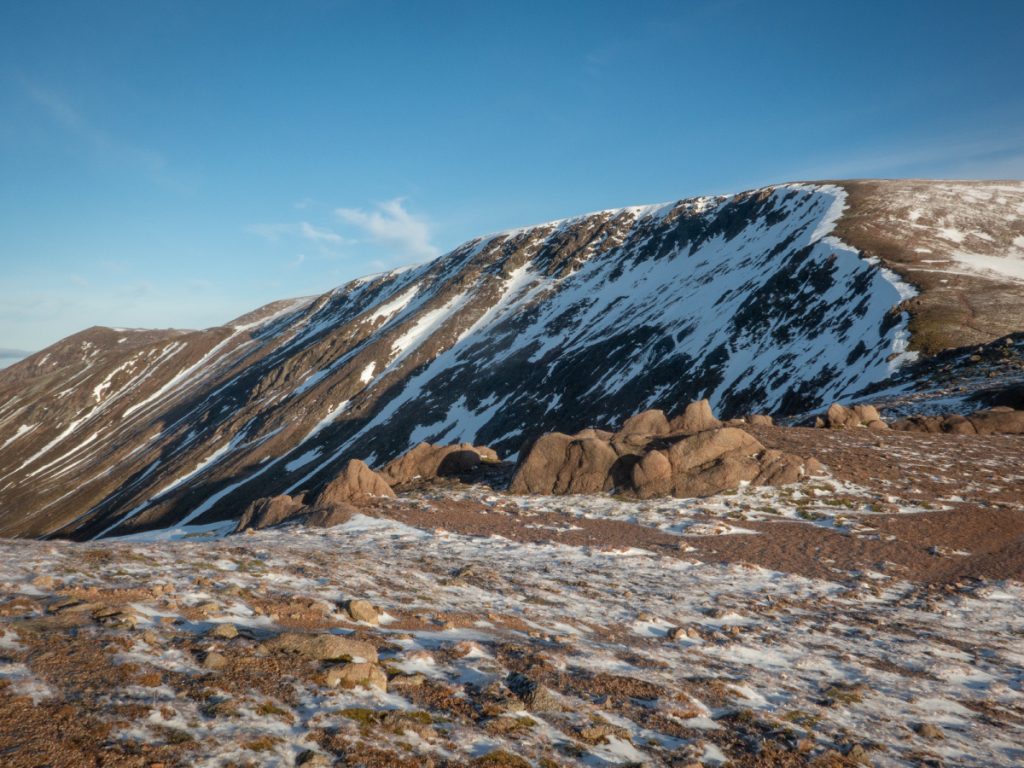
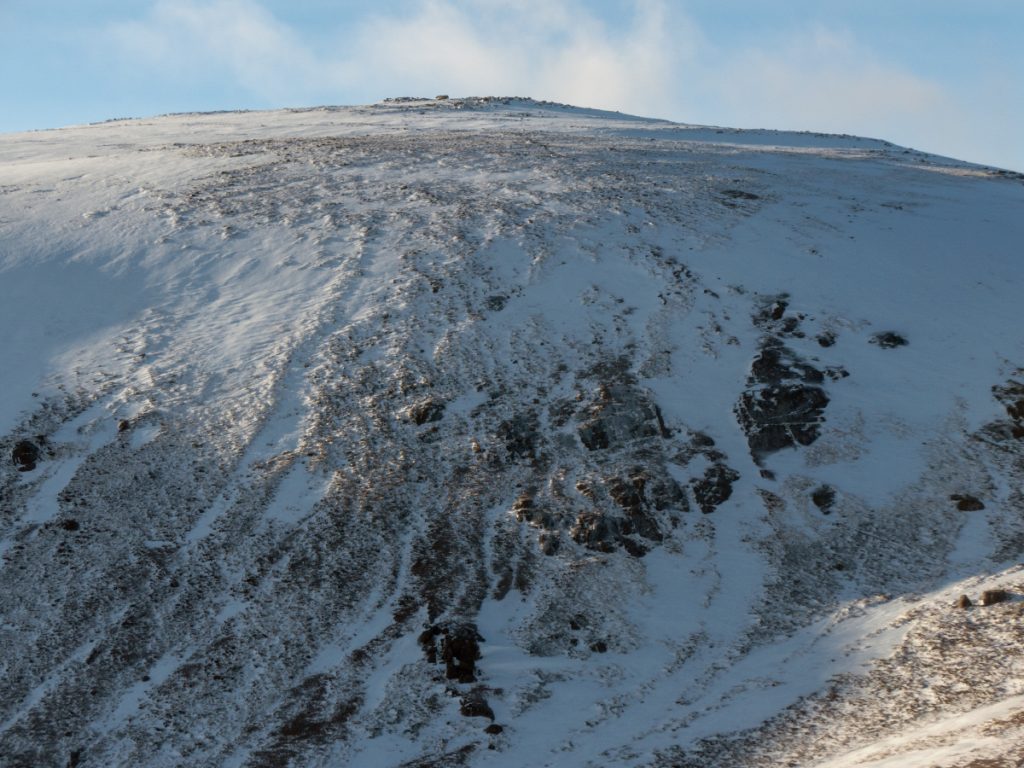
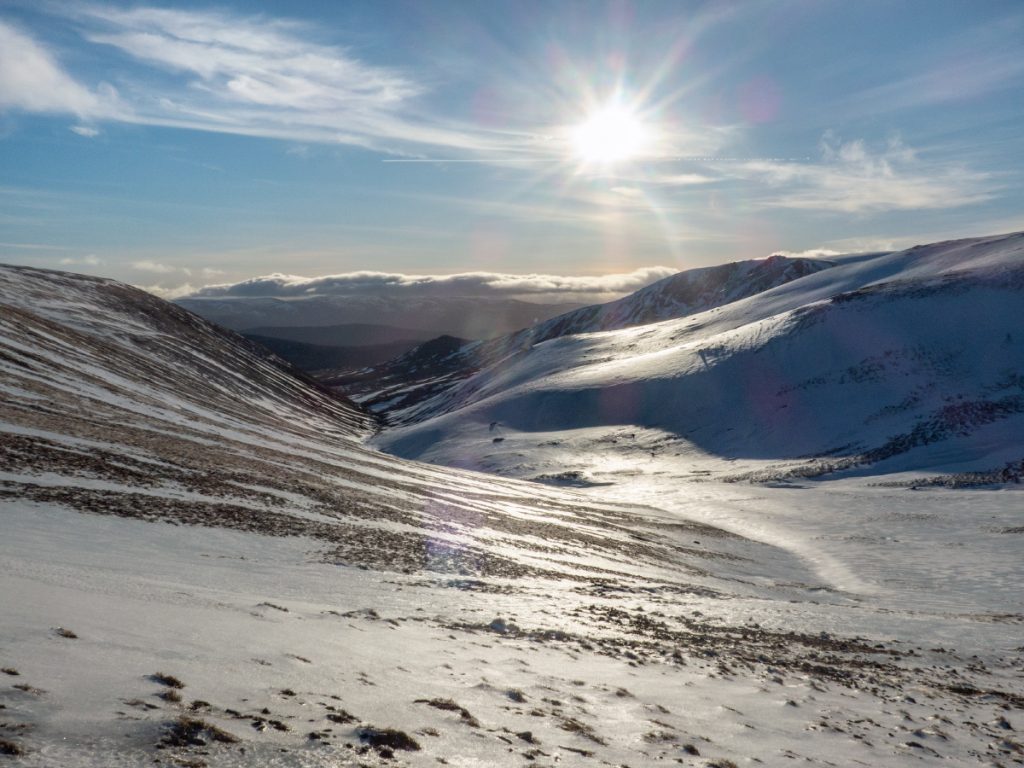
Heading up on to Ben Avon, the grass tinkled and crunched, encased in ice
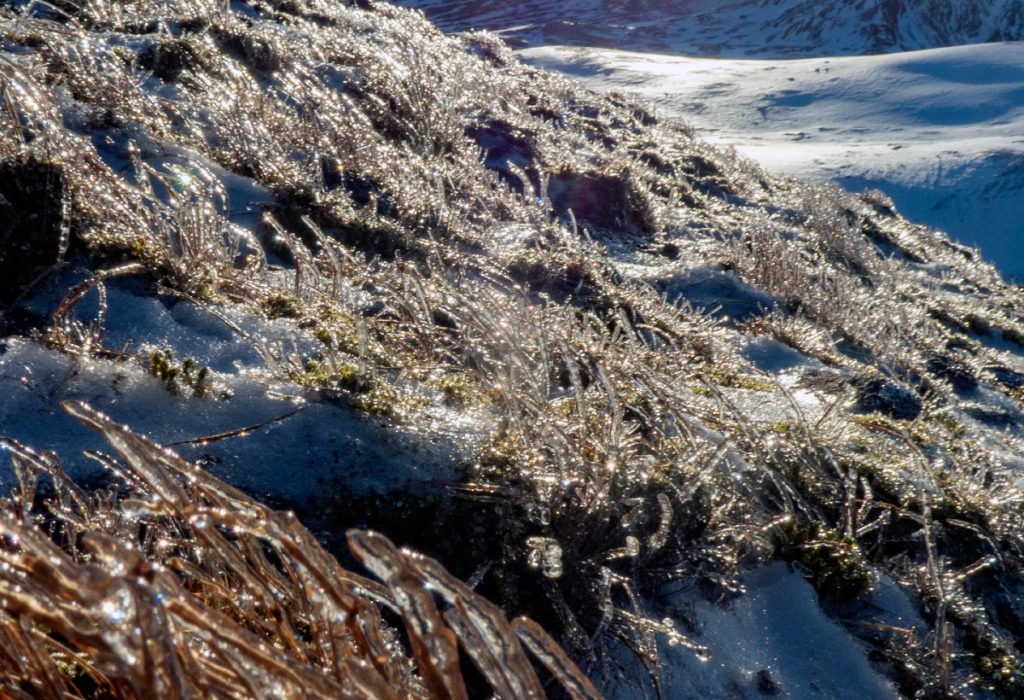
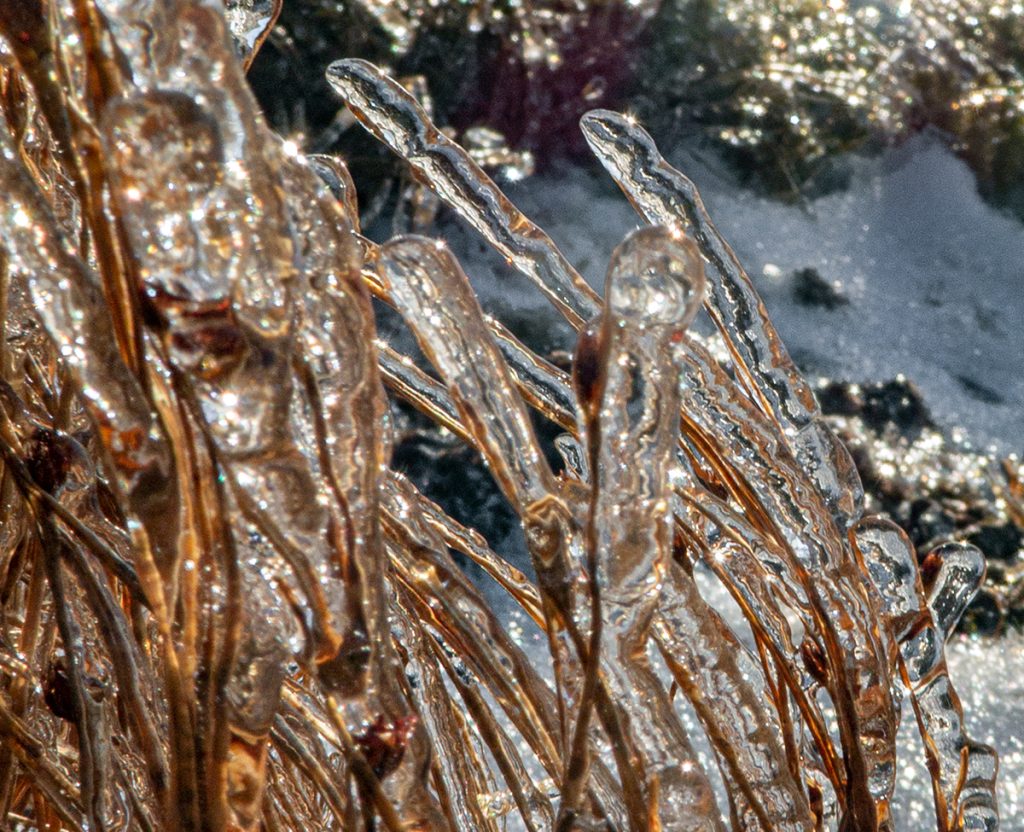

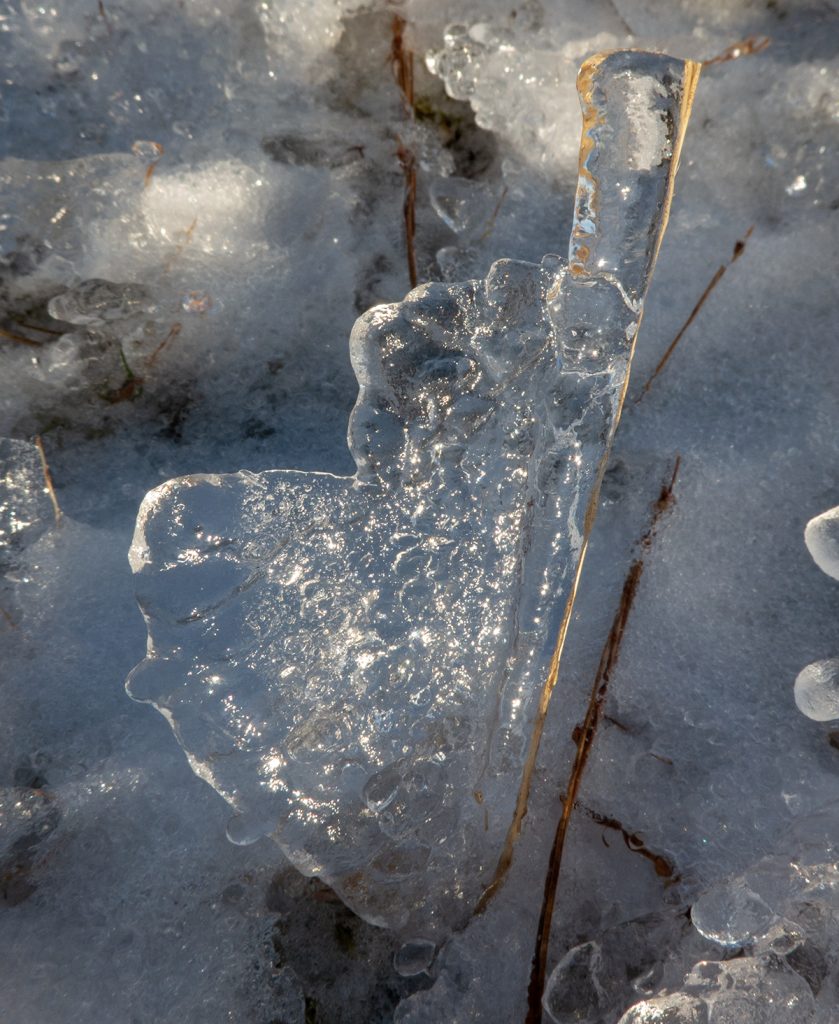
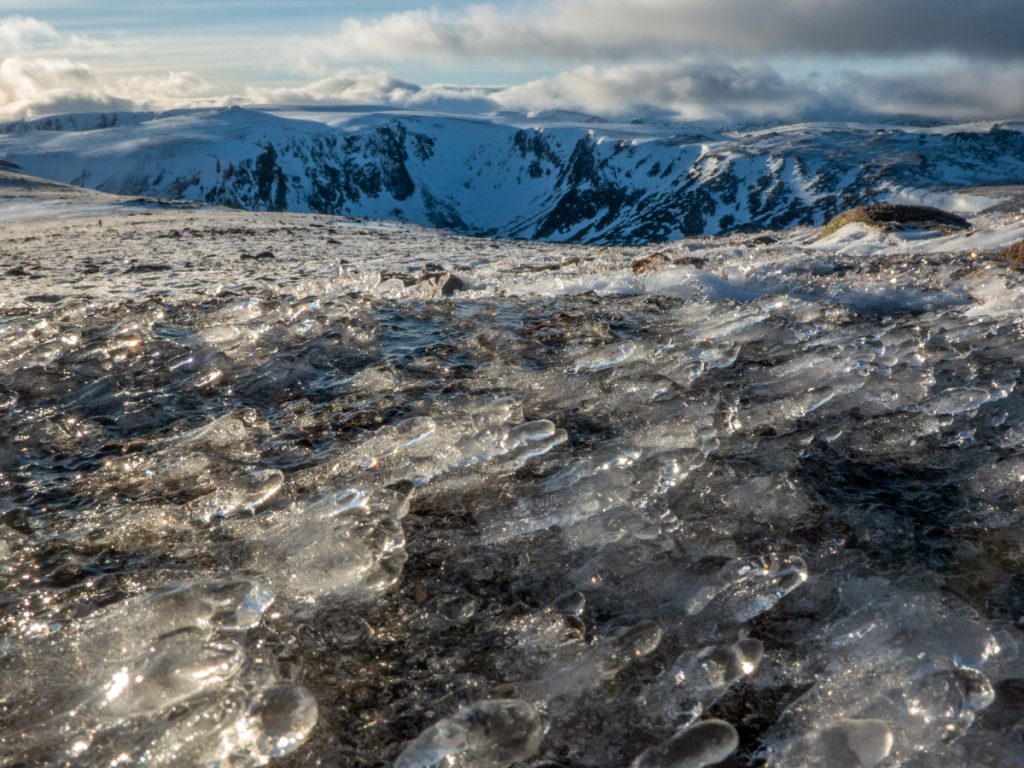
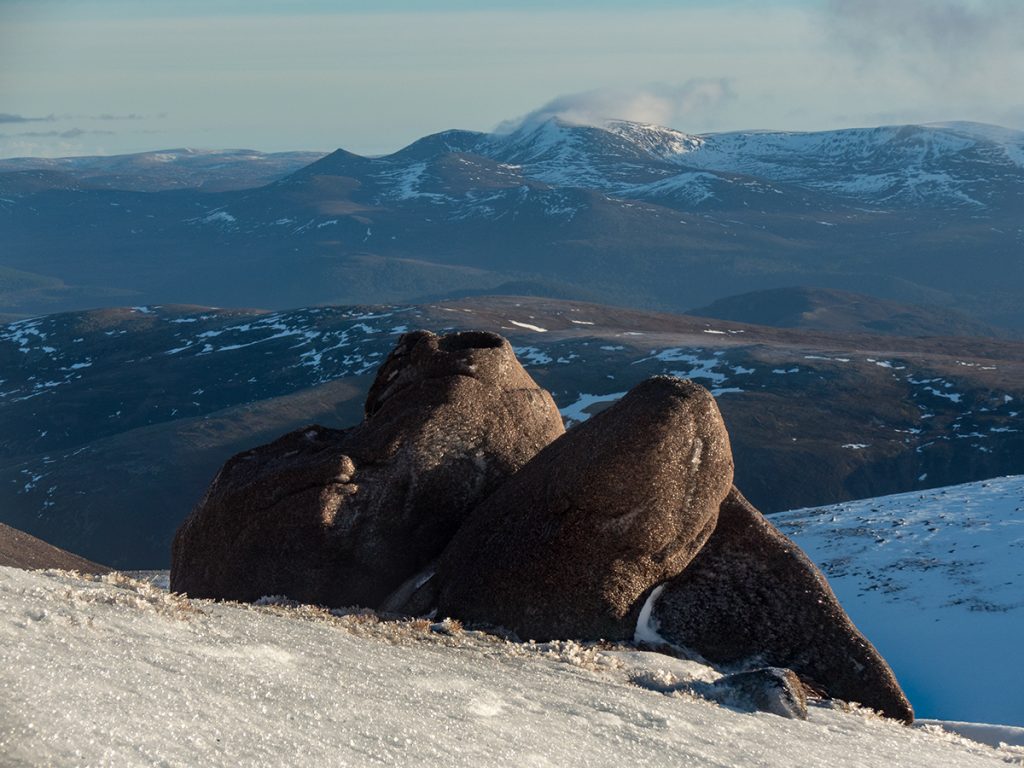
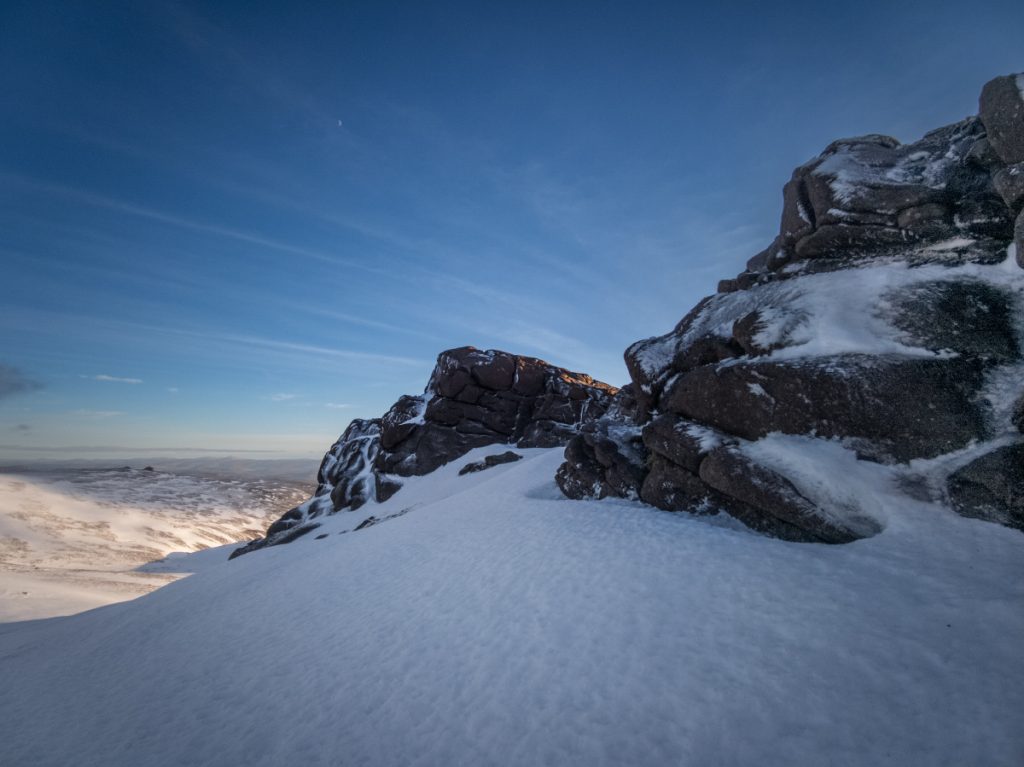

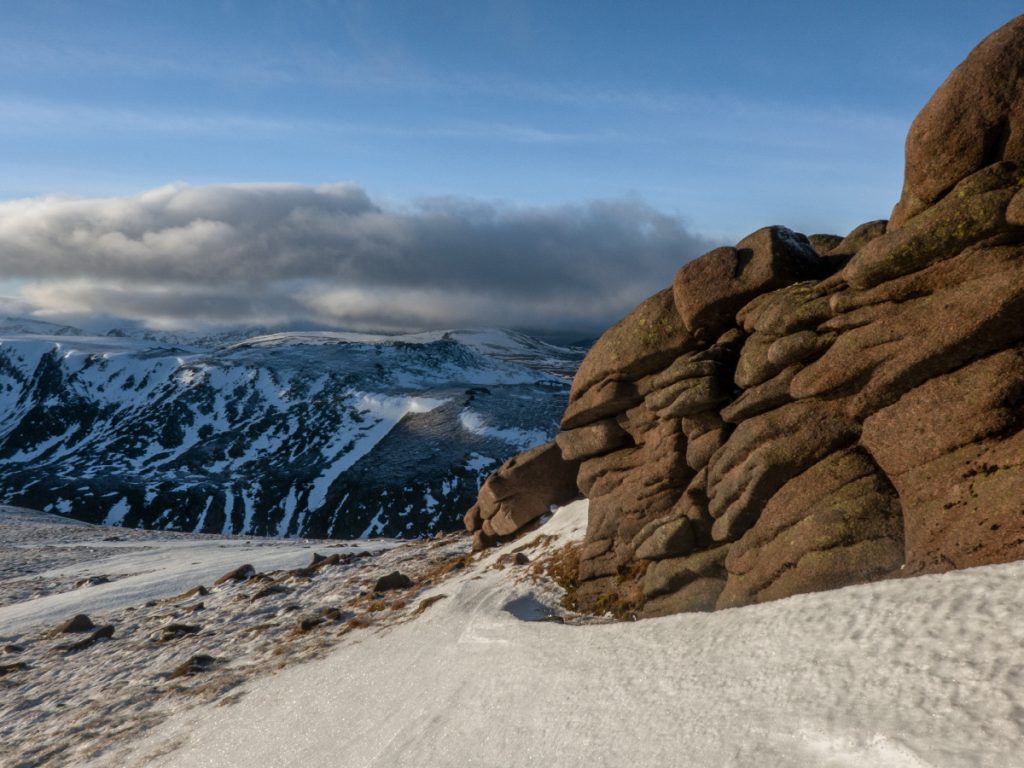
A brief stop today, we were running out of daylight. The pace we’d made so far proved there’d have been no chance of traversing to Aviemore, so it had been the right call to loop back.
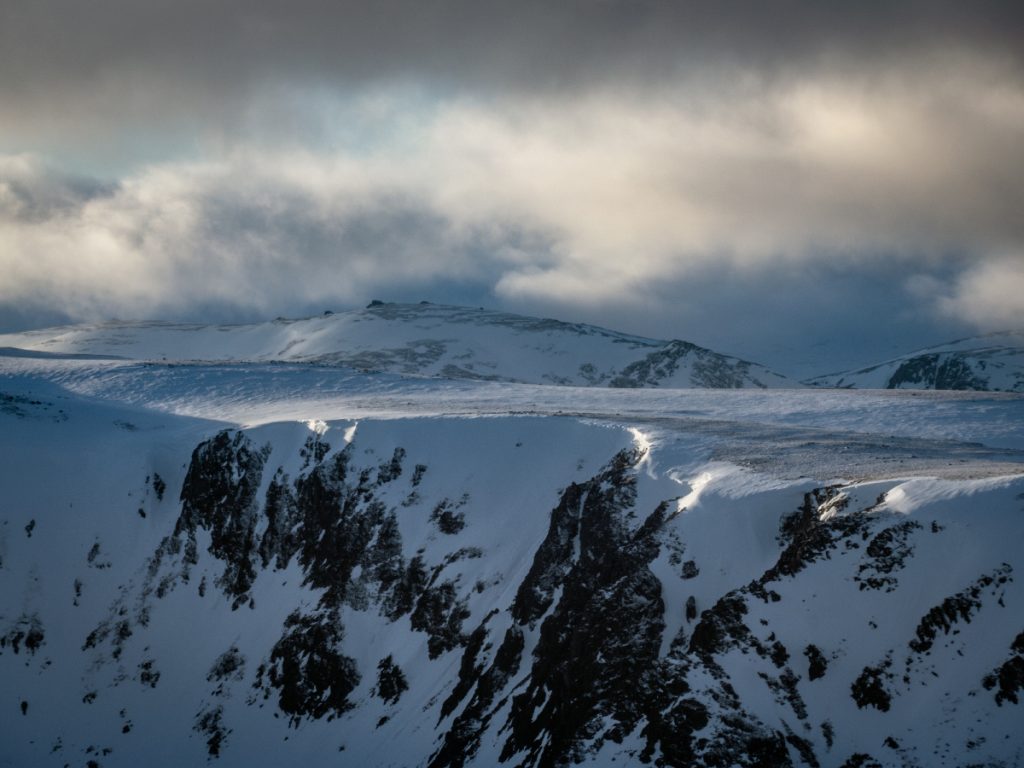
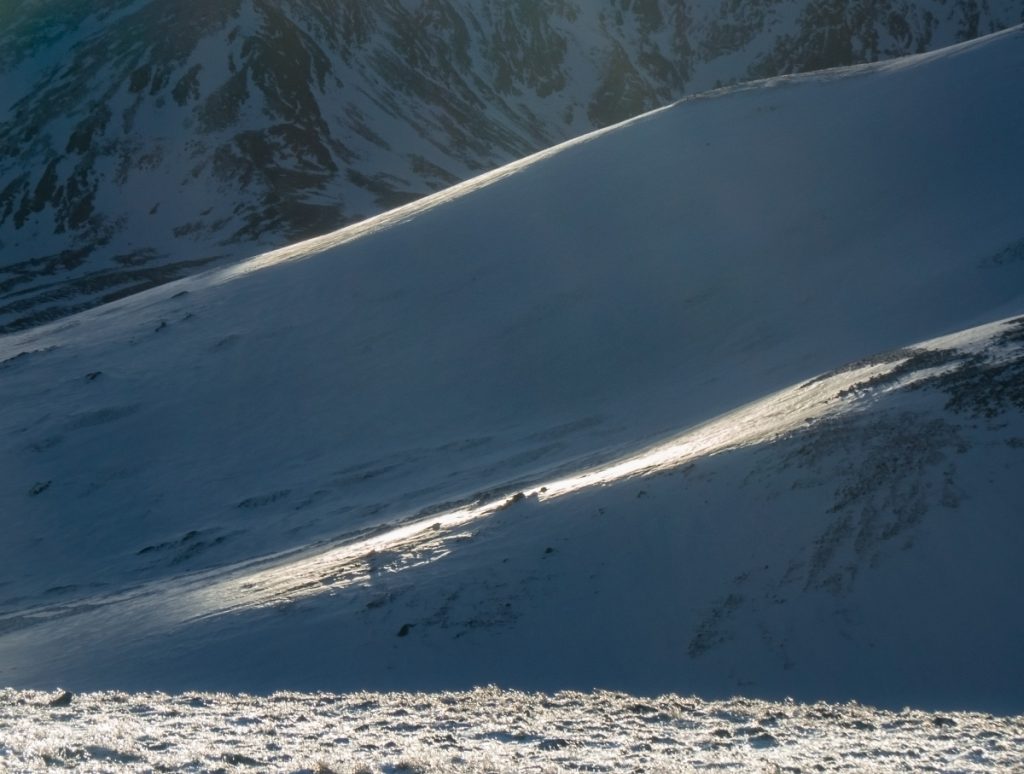
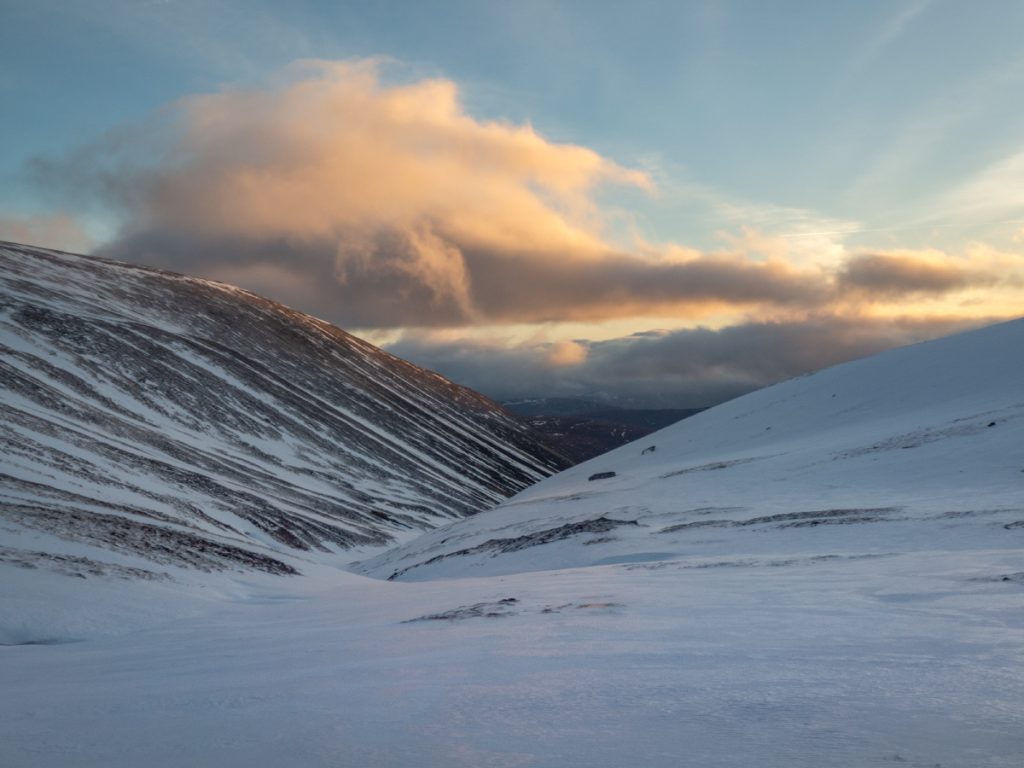
The Sneck glen can hold a lot of snow and so it proved: the upper burn completely hidden then appearing sporadically under huge whirls of snow
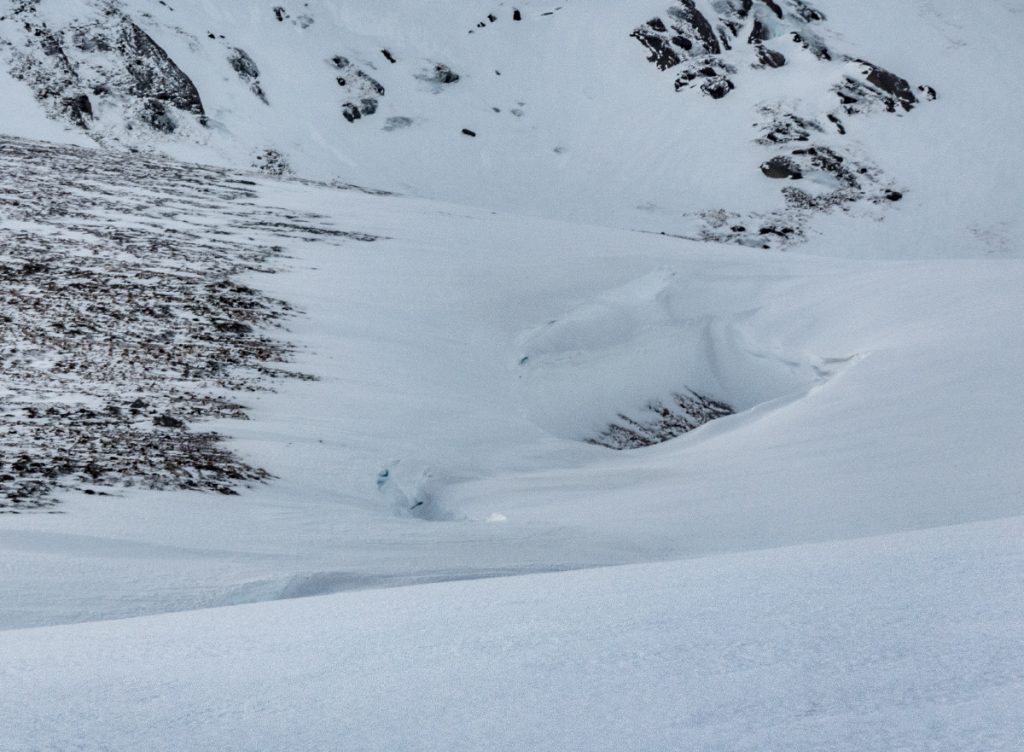
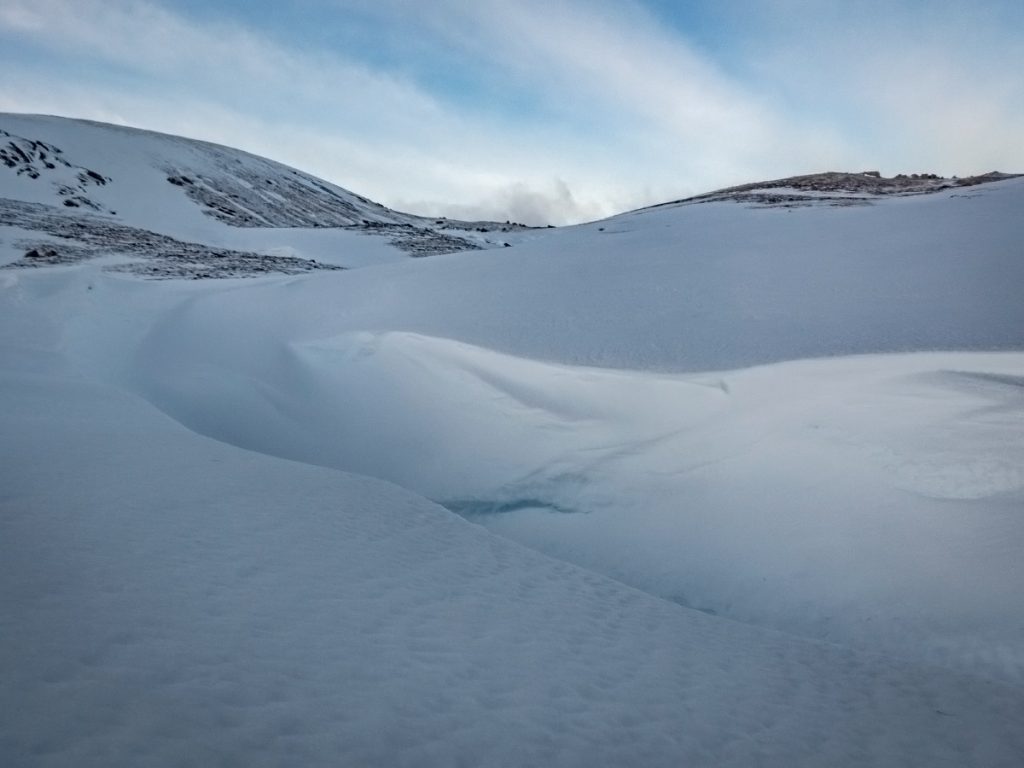
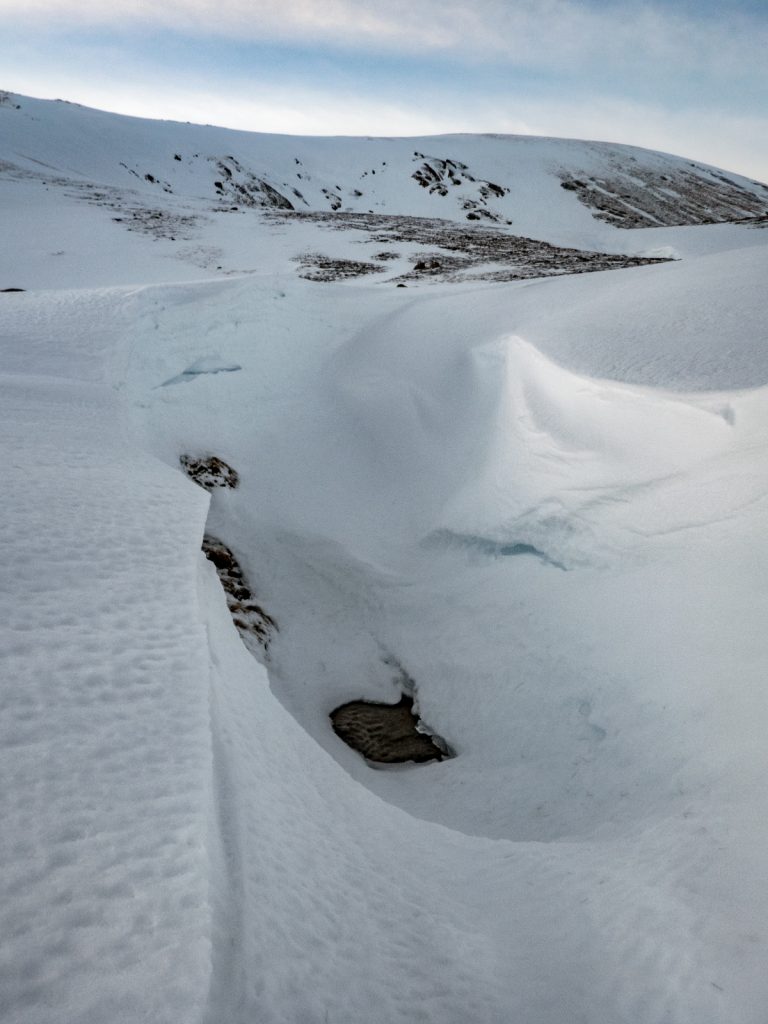
The snow was hard as evening approached, and allowed us to walk down the bottom without much hazard of falling through.
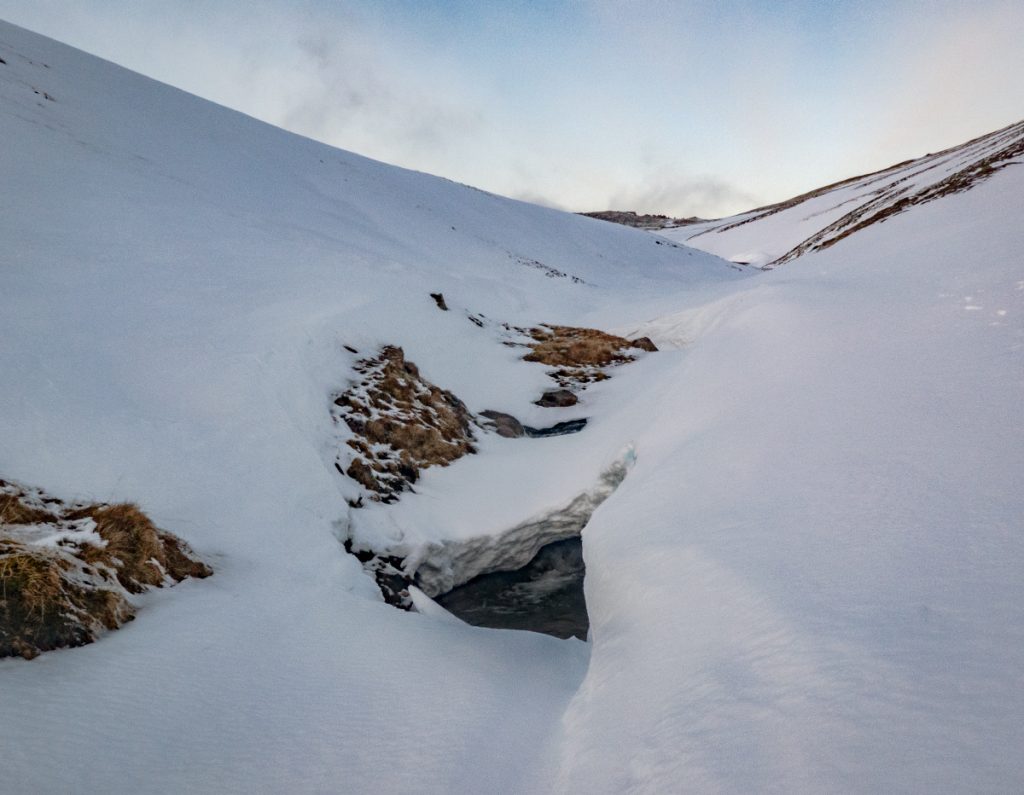

Lower down the burn burst through, but at the next two crossings fortunately they were bridged by snow
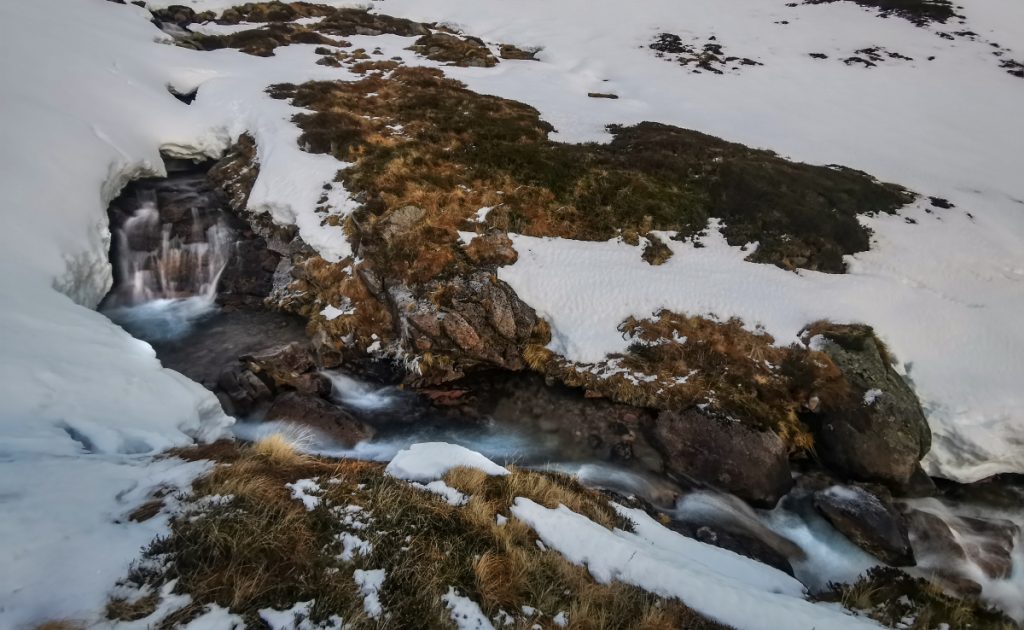

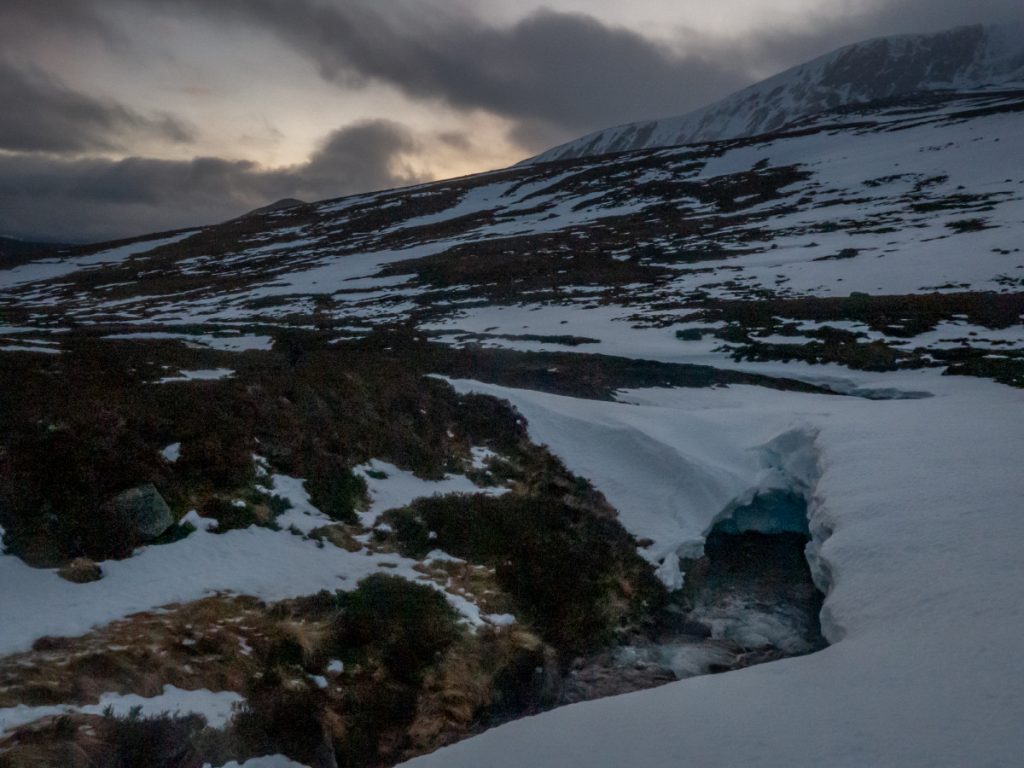

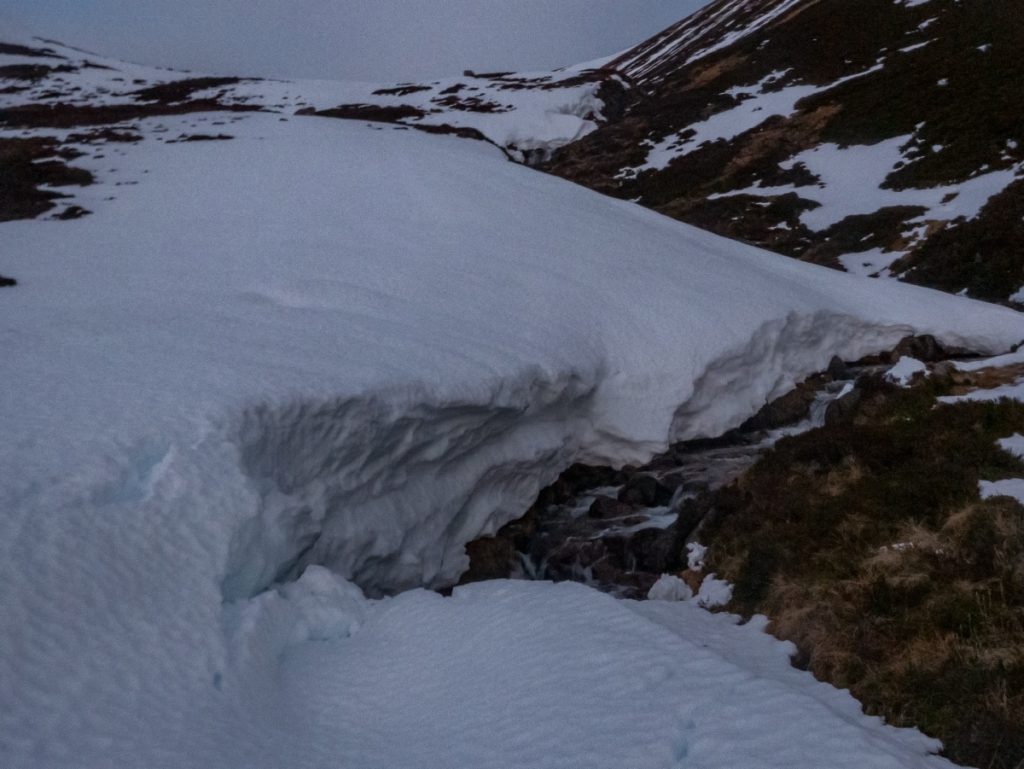
The trail was banked out and although the fall-line gradient quite shallow, the hardness meant the crampons had to go back on at times.
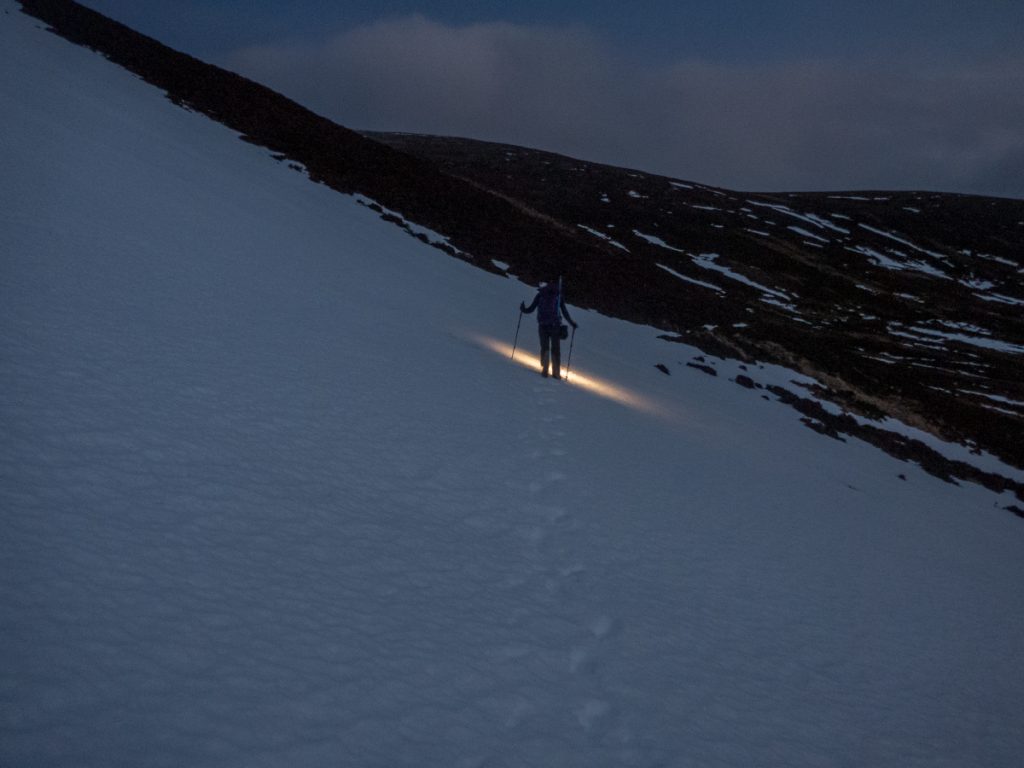
Earlier I’d mentioned how if we’d headed up the trail in daylight we’d have seen a hazard: reaching the top of the Slugain, unexpectedly huge banks meant caution was needed as the banked-out path teetered above a large drop to the pool, and then at a stream we had to climb down a high vertical bank: another equipment limitation had been shown – although our torches were quite bright, they were all flood beams and didn’t have enough ‘throw’ to scan far ahead and ‘route and hazard find’ to a useful distance. [I later got a wuben E6 mini torch with a narrow beam which has been great for longer distance illumination and route finding]
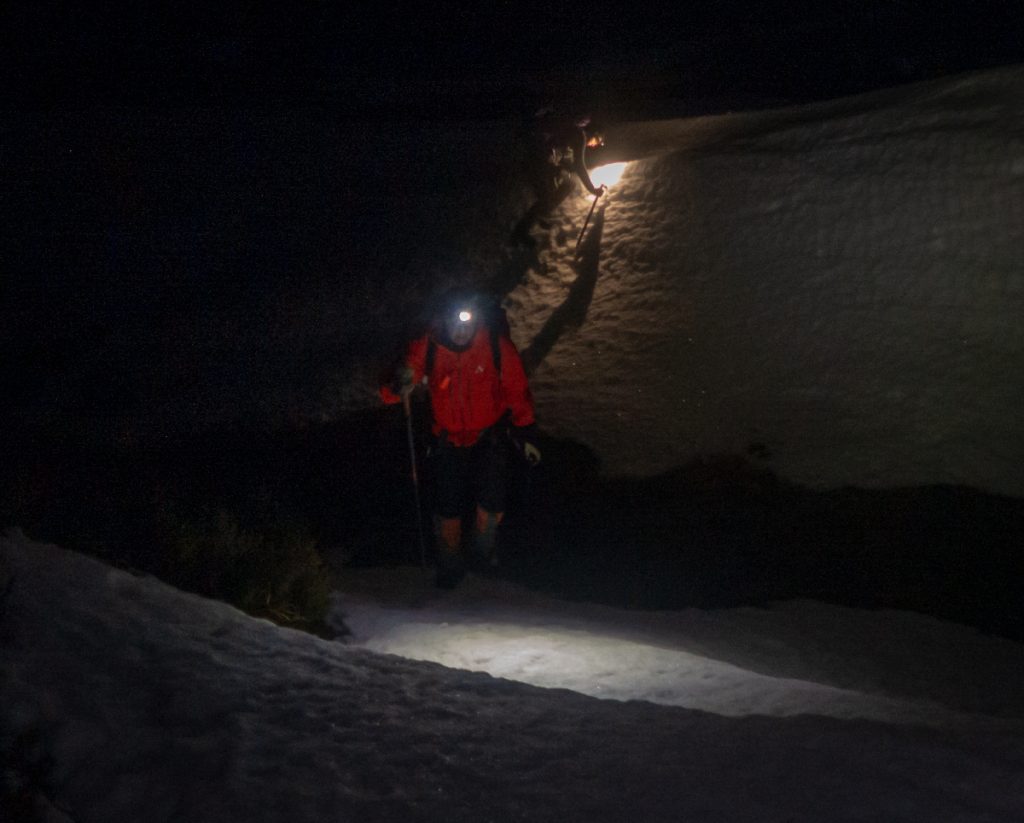
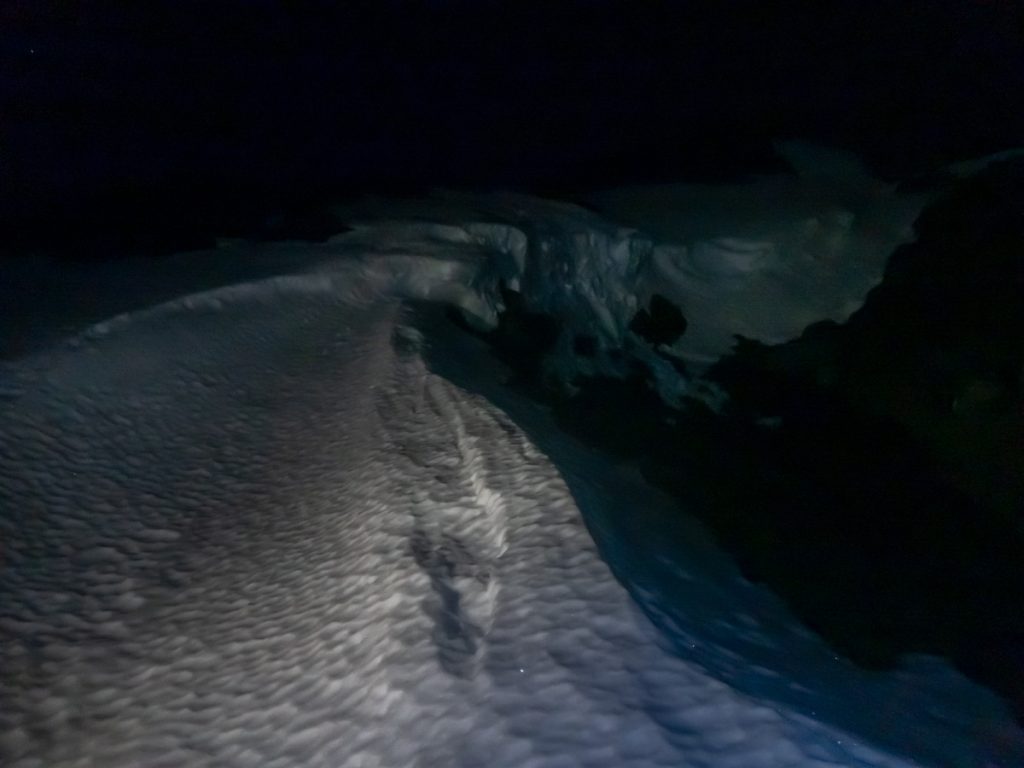
We weighed up another night in the howff: Sunday was going to see high-wind, with nothing much else to be gained tomorrow we decided to bear another few miles and slogged down to Keiloch to get back to Aberdeen that night. A long day out, but 2 cracking mountains in great conditions.